Stretching between the cities of Derry-Londonderry and Belfast, the beautiful Coastal Causeway Route is arguably the most famous road trip in Northern Ireland.
*This post may contain affiliate links, as a result, we may receive a small commission (at no extra cost to you) on any bookings/purchases you make through the links in this post. As an Amazon Associate, we earn from qualifying purchases. Read our full disclosure
This 300-kilometre (190-mile) drive features some of the most picturesque landscapes in Northern Ireland, including coastal villages, rugged cliffs, beautiful beaches, and world-famous geological wonders. There are plenty of stops along the way and so much natural beauty and history to take en route.
Driving along the Coastal Causeway is, by far, the best and easiest way to tour Northern Ireland since the most popular destinations are located on or within a short distance from the Causeway Coastal Route.
For that reason, we choose to follow this beautiful drive to discover the best of Northern Ireland on our recent trip to the region. In just three days, we visited all of the main attractions along the Causeway Coastal scenic route, enjoyed a stunning sunset at the Giant’s Causeway, toured beautiful ancient castles and picturesque ruins, walked on the cliff edge of the Irish Sea, sampled some delicious food, and visited a few of the Game of Thrones filming locations.
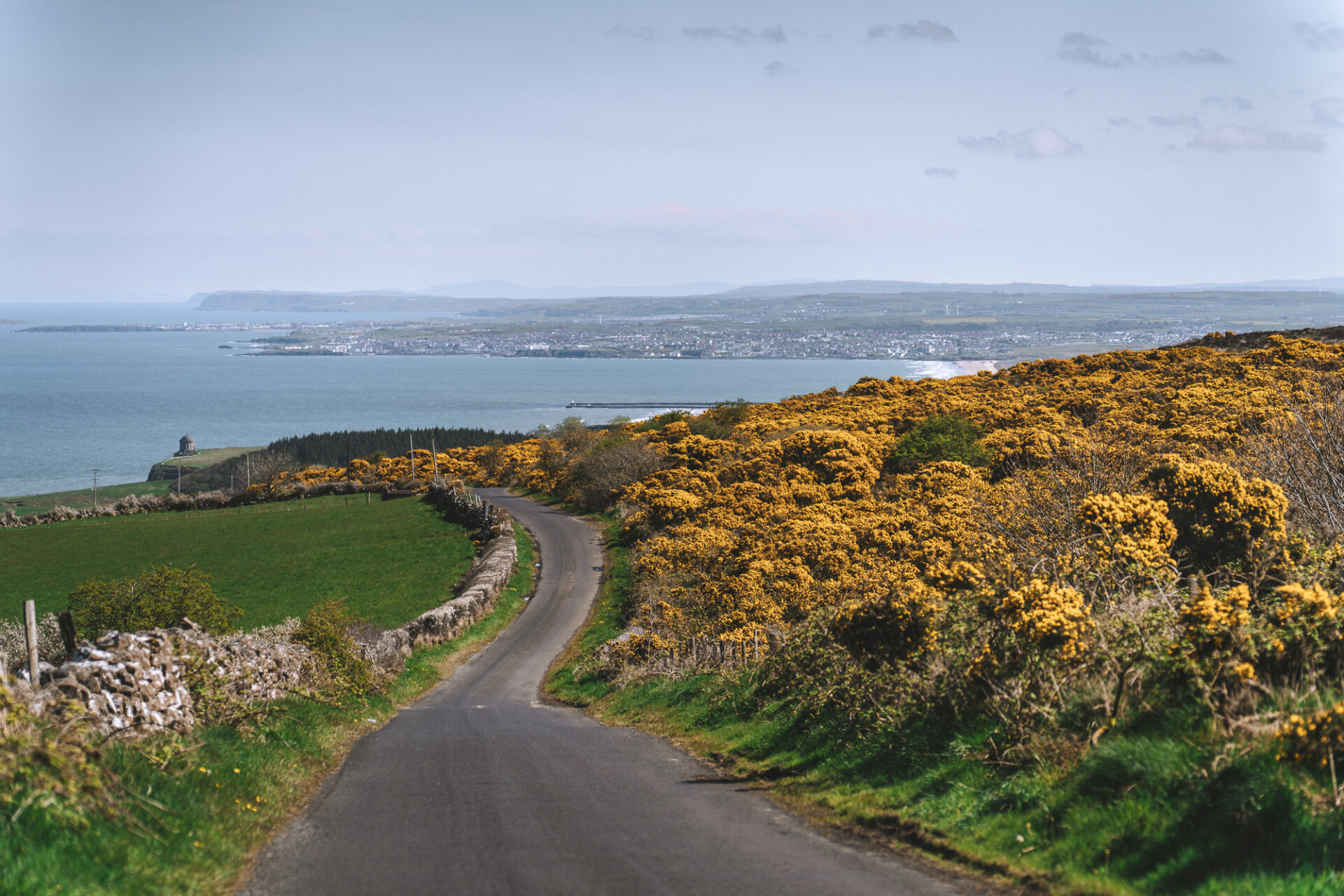
Traveling Soon? Here is a list of our favourite travel providers and accessories to help get you ready for your upcoming trip!
We documented our travels to share our epic Causeway Coastal route itinerary with you below. If you are planning your own scenic road trip along the Causeway Coastal Route, this article is all you need!
Causeway Coastal Route: The Basics
How long is the Causeway Coastal Route?
The Causeway Coastal Route is approximately 190 miles (300 kilometres) long. It stretches along the northern coast of Northern Ireland, starting in Belfast and ending in Derry-Londonderry. The route is scenic through breathtaking coastal landscapes, charming villages, and iconic landmarks such as the Giant’s Causeway.
Where does the Causeway coastal route end?
The Causeway Coastal Route can be undertaken in a clockwise or counterclockwise direction so that the Causeway Coastal Route can end in the historic city of Derry-Londonderry or Belfast. We followed a clockwise direction during our road trip, starting from Derry-Londonderry and ending in Belfast.
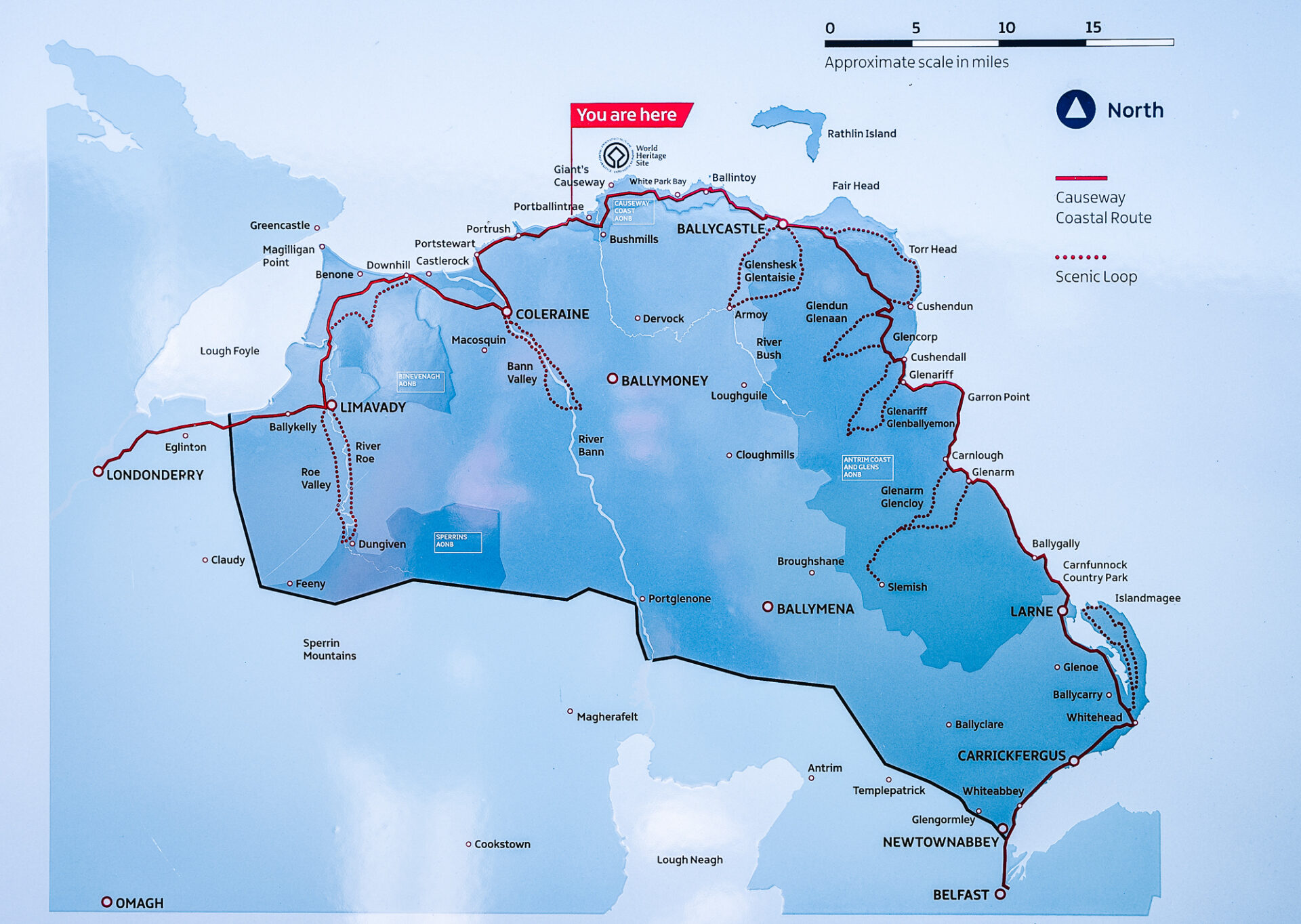
How Long Do You Need to Spend on Coastal Causeway Route?
The amount of time you’ll need to spend on the Coastal Causeway Route depends on your interests and how thoroughly you want to explore the attractions along the way. We recommend a minimum of three to four days to cover the major attractions and experience the stunning coastal scenery.
If you want to fully immerse yourself in the region’s history, culture, and natural wonders, allow a week or more to soak it all in.
If you’re short on time, you can squeeze in the most popular sights in 2 days. The absolute must-see destinations include the Giant’s Causeway, Carrickfergus Castle, Dunluce Castle, and The Gobbins Cliff Path, and you can definitely fit them into a two or 3-day itinerary.

Our Coastal Causeway Route Itinerary
Stop 1: Derry-Londonderry
Dating back to the 6th century, the old city of Derry-Londonderry is perched on a hill on the west bank of River Foyle. The town is seeped in history, from its 17th-century protective walls to the modern murals depicting key moments during the Troubles, a period of the 30-year conflict in Northern Ireland that lasted until the late 1990s.
Strolling around the city, you’ll see architecture dating back to the early days of the settlement, amazing street art, and an innovative food scene.
Things to do in Derry-Londonderry
Take a walk along the historic City Walls. The Walls form a 1.5 km walkway around the old town, providing a unique vantage point to view the original Renaissance Style street plan of the only remaining walled city. You’ll see the four original gates to the old town and 24 preserved cannon used to protect the town during sieges.
Admire the Guildhall, a stunning historic civil building constructed in a neo-gothic style. The striking red sandstone building features impressive stained-glass windows and offers a new interactive tourist information point. The Guildhall is still in use today, serving as the city council’s chamber and playing host to the city’s key cultural events.
Walk across the Peace Bridge. Located a short walk from the Guildhall and the historic City Walls, the Peace Bridge is a cool example of engineering and historical symbolism that is of the people of Londonderry. The foot and pedestrian bridge stretched across the River Foyle, connecting Ebrington Square with the rest of the city, joining together a once-divided community.
Visit the Craft Village, a collection of artisan craft shops, restaurants, and cafes, just a short walk from the Guildhall. The Craft Village is full of local art, hand-crafted items, and locally made beer, cheeses, and charcuterie.
Check out the famous murals by The Bogside Artists. These 12 murals can be found on the walls of buildings in the Bogside neighbourhood and can be seen from Rossville Street. This exhibition is known as The People’s Gallery and is entirely supported by local residents’ contributions.
Where to Eat in Derry-Londonderry
Hidden City Cafe is an award-winning example of the city’s vibrant food scene and a great spot for organic dishes in the historic city centre. Focused on ethically and locally sourced ingredients, this family-owned restaurant offers vegan and locally sourced seafood dishes, along with organic wines, spirits, and locally brewed beers.
Walled City Brewery is a perfect dinner spot for lovers of gastropubs and craft beers. The menu is varied, features a number of vegetarian/vegan options, and features locally-sourced ingredients. Beer tasting is on offer with a sampler of the 6 beers brewed onsite.
Stop 2: Binevenagh Area of Outstanding Beauty
Located 30 minutes outside of Derry~Londonderry, the Binevenagh Area of Outstanding Natural Beauty offers panoramic views of the beautiful landscape of the western Antrim Plateau. Designated in 2006 and safeguarded as a National Conservation Area, Binevenagh AONB offers recreational activities and access to recognized historic structures.
Depending on how much time you have, you can take a scenic drive to explore Binevenagh Mountain and Lake or enjoy the natural beauty of the area with a hike.
Gortmore Viewpoint sits about 260 meters above sea level within Binevenagh and can be easily reached by car. The viewpoint offers spectacular views all the way to Donegal in the east and the Isles of Scotland to the west.
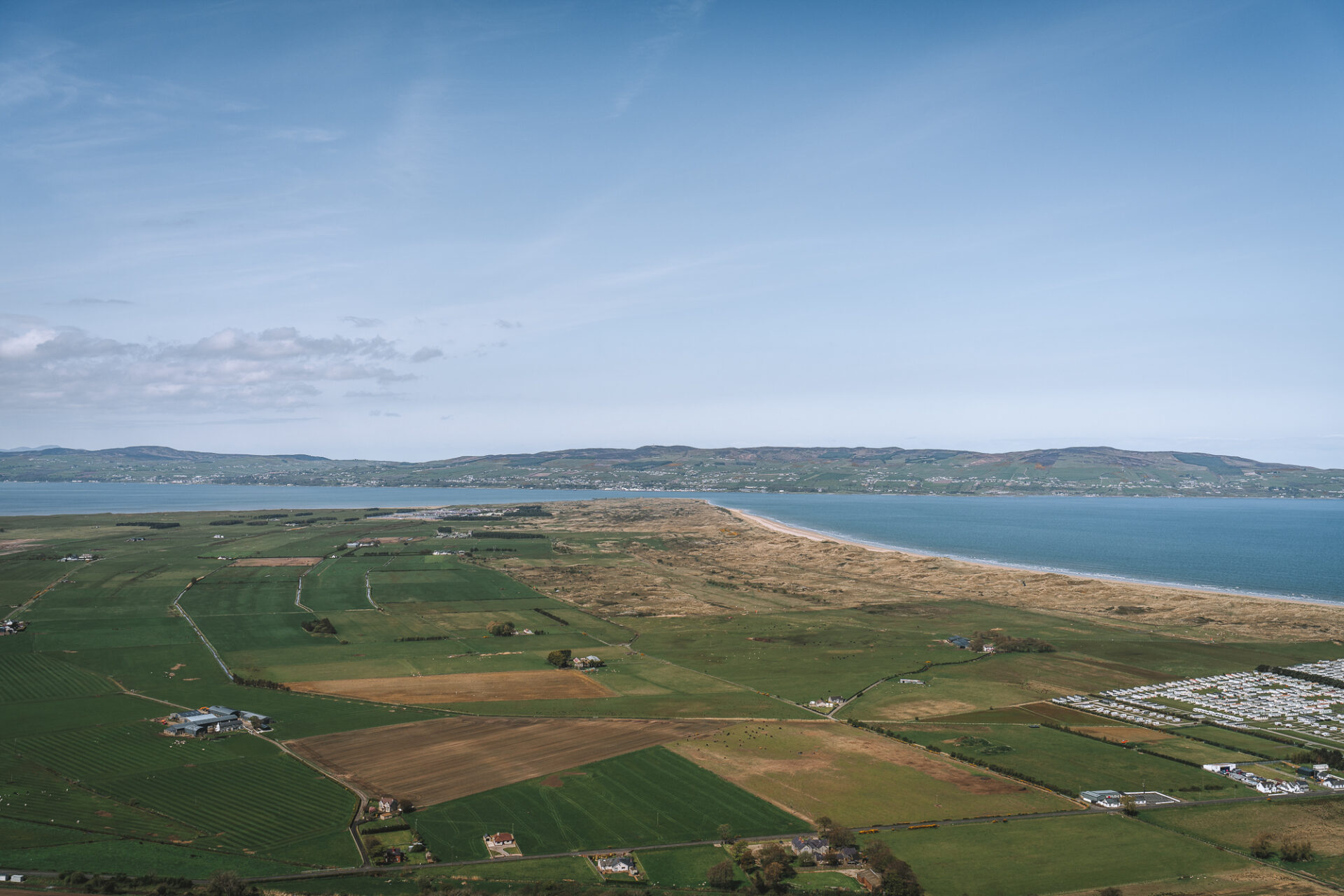

Stop 3: Benone Beach & Mussenden Temple and Downhill Demesne
Continue along the coast for 15 minutes to reach Benone Beach and the iconic Mussenden Temple. Perched on a cliff over the Atlantic Ocean, the historic temple is one of the most photographic sites in Ireland.
Built in 1785, the Mussenden Temple was intended as the Temple of Vesta, inspired by a summer library and its dramatic design in the Italian town of Tivoli.
If you have a few hours to spare, take some time to check out Downhill Demesne, an extensive estate that surrounds the Mussenden Temple. The iconic Lion’s Gate, an imposing stone entrance guarded by lion statues, serves as a grand entrance to the estate. You can also visit the ruins of Earl Bishop’s mansion, the picturesque Walled Garden that once provided the mansion with fruit and vegetables, and the historic Hazlett House. Before you continue your trip on the Causeway Coastal Route, take a clifftop walk along the property to take in the impressive sea views from above.
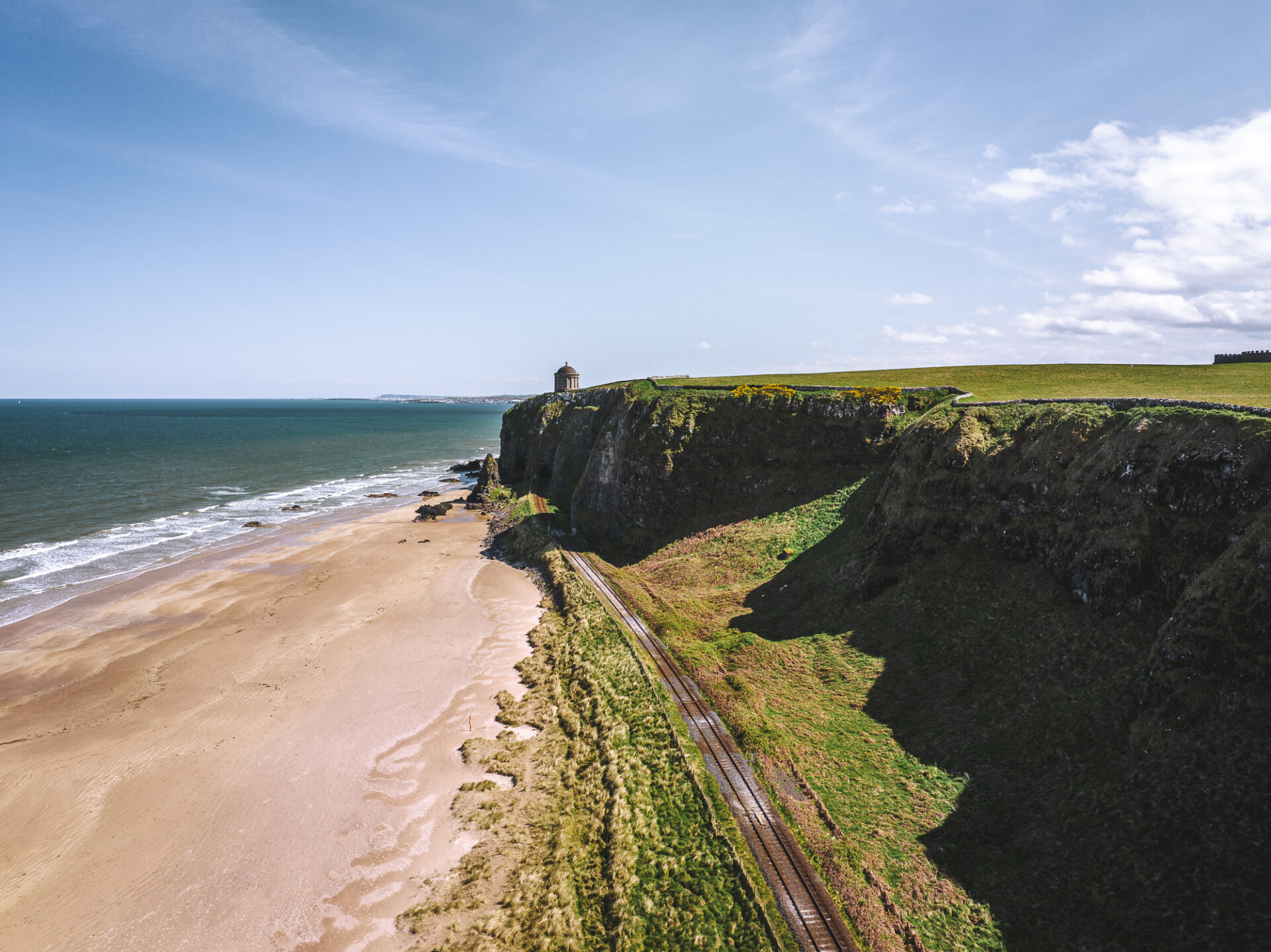


Stop 4: Portrush
The vibrant seaside resort town of Portrush is famous for its sandy beaches, nightlife, and world-renowned Royal Portrush Golf Club. It makes for a nice pit stop on the Causeway Coastal Route, either as a lunch spot or an overnight stop, if you are splitting up the drive into multiple days.
The town has a number of hotels, restaurants and other amenities. The harbour of Portrush is a hub of activity and an ideal spot for a stroll or a fresh seafood meal at one of the local restaurants.
In the warmer months, Portrush Whiterocks Beach, West Strand Beach and East Strand become popular spots for swimming, sunbathing or water sports such as surfing and paddleboarding.
Stop 5: Dunluce Castle
Perched on the edge of a dramatic basalt cliff, this medieval castle is one of the most picturesque and romantic settlements in Ireland. Once home to the powerful MacDonnell Clan, prominent figures in Irish and Scottish history, the castle ruins sit on evidence of settlement going back to the 13th century.
The historical and archaeological exhibits in the castle tell intriguing stories featuring clan feuds, tales of a banshee, and the catastrophic collapse of the castle kitchens into the stormy sea one night in 1639.
The castle grounds are open to the public from 9:30am – 5pm daily. Tickets are £6 for adults and can be reserved in advance or purchased at the gate.
The ruins are a fascinating sight worth exploring. You can climb the stone staircases and enjoy panoramic views of the surrounding coastline. Give yourself some time to roam the grounds, read the information panels and let your imagination run wild as you picture what life was like within its walls.

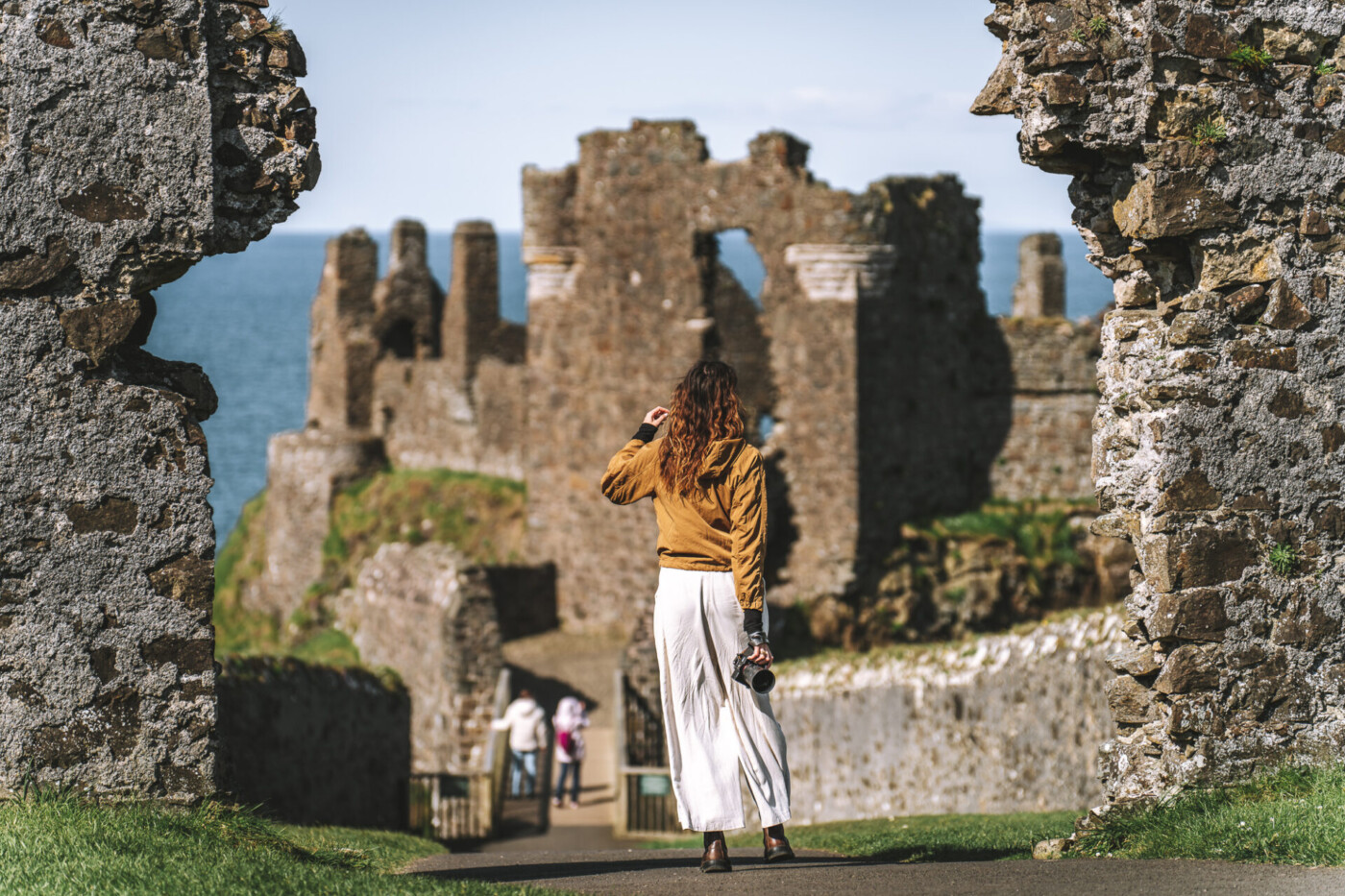

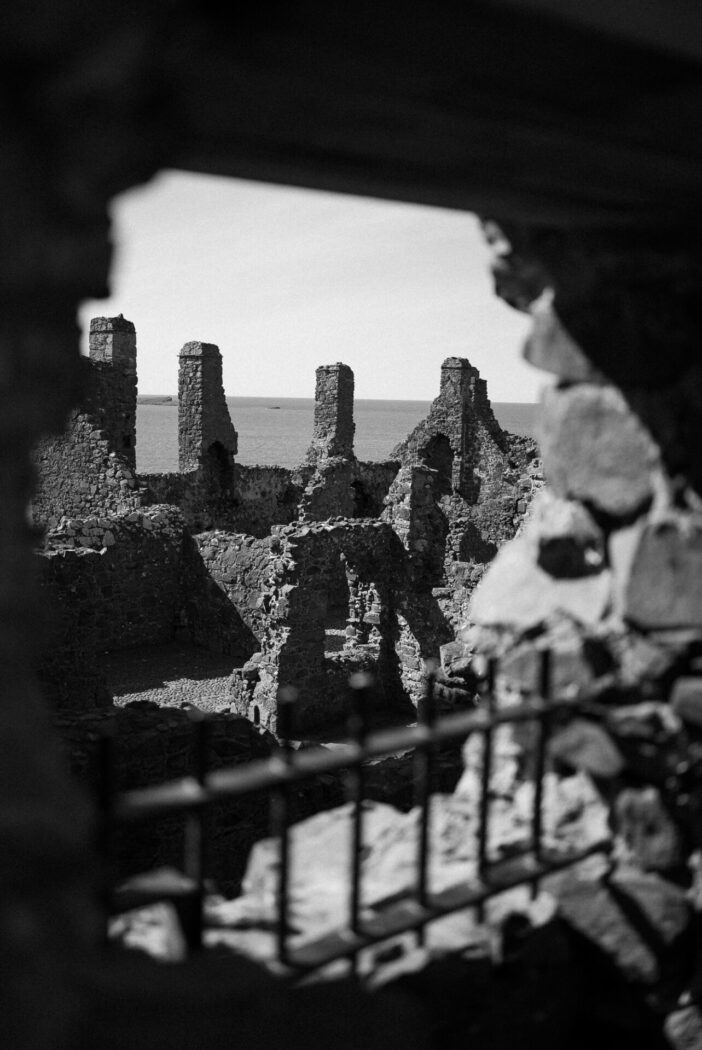

Stop 6: Old Bushmills Distillery
Bushmills is a charming village located just a 5 min drive from Dunluce Castle. The village is steeped in cultural heritage and folklore, with a museum and historic landmarks like the Old Bushmills Church and the Bushmills Heritage Centre.
Its claim to fame is the Old Bushmills Distillery, Ireland’s oldest working distillery, dating back to 1608. It has been producing Bushmills Irish whiskey for over 400 years, gaining international recognition for its exceptional quality.
Guided tours of the distillery are on offer. You can learn about the whiskey-making process and enjoy tastings of their renowned spirits.
The town is also a good spot for an overnight stay. There are a couple of B&Bs and charming Inns in town located not far from the Bushmills Distillery that offers a good place to lay your head after a long day of exploring.
Stop 7: Giant’s Causeway
Northern Ireland’s only UNESCO World Heritage Site, the Giant’s Causeway is a dramatic landscape of unique formations and a striking coastline of basalt cliffs. Formed by molten lava over 60 million years ago, the world-famous hexagonal basalt columns of the Giant’s Causeway have provided a dramatic backdrop for folklore and inspired scientific debate.
While the processes involved in the formation of this unique landscape are fascinating on their own, the legends surrounding the site add intrigue and romance to its history. According to one legend, an Irish giant created a causeway to get across the Irish Sea in order to face his Scottish rival. The Scottish giant was so intimidated that he fled back to Scotland, ripping up the causeway and leaving the basalt columns that are seen today.
No visit to Northern Ireland is complete without a stop at the Giant’s Causeway. It’s a beautiful destination to visit any time of the day, but we particularly recommend it at sunset or sunrise. We found the sunset to be absolutely magical, with very few crowds and stunning colours over the Atlantic Ocean.
The Giant’s Causeway Visitor Centre (open daily from 9am-5pm) offers plenty of information about the site’s distinctive formations and its trails. The trail from the visitor center to the main attractions, the Amphitheatre and the Organ Pipes, stretches for about 2 km, but you can continue along the Giants Causeway Walk for 8 km, all the way to Dunserverick.
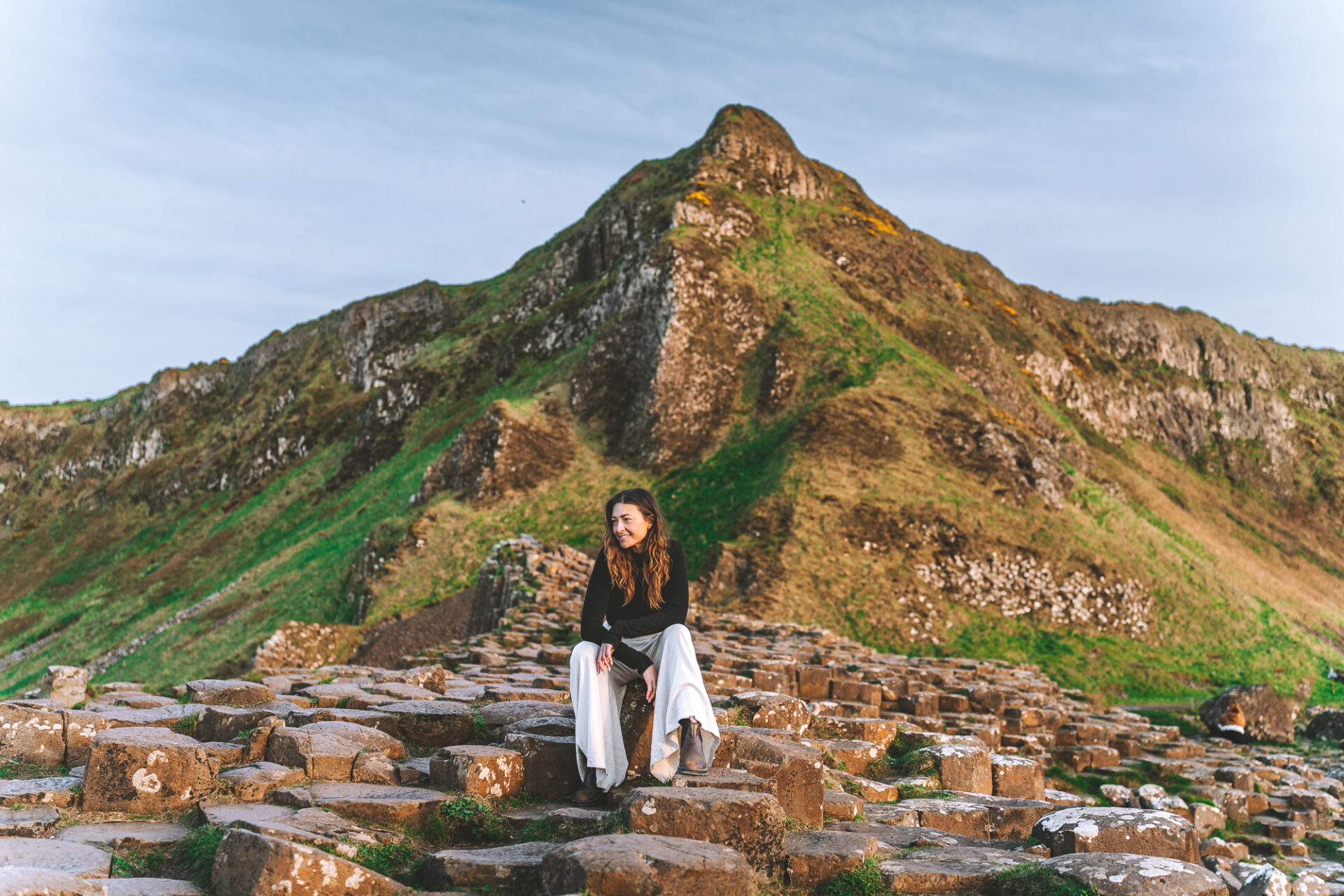
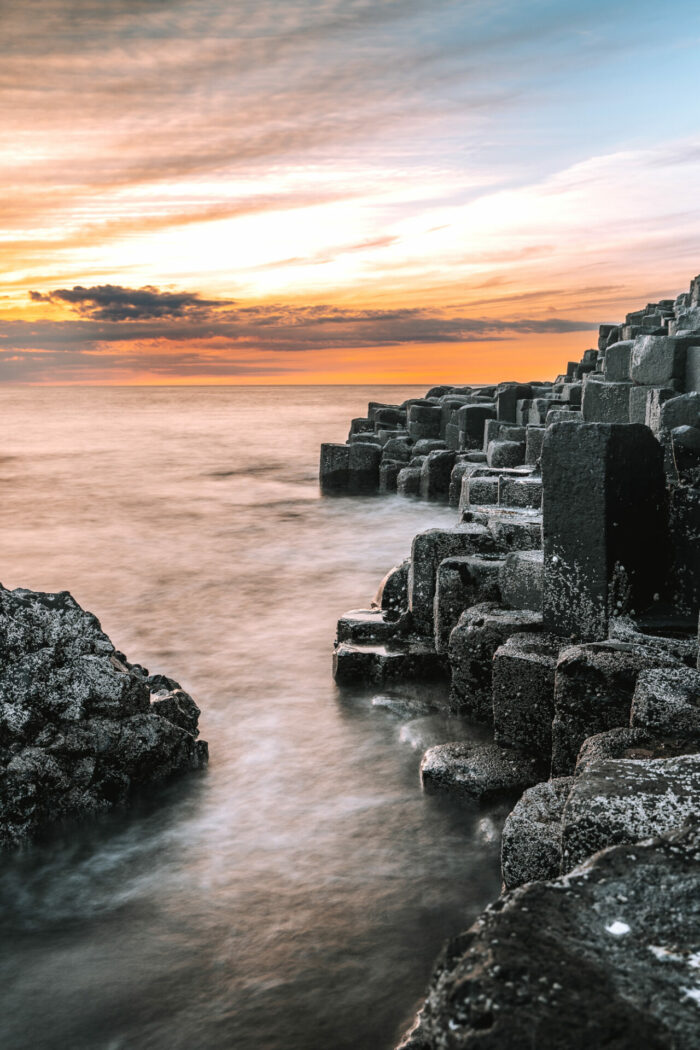

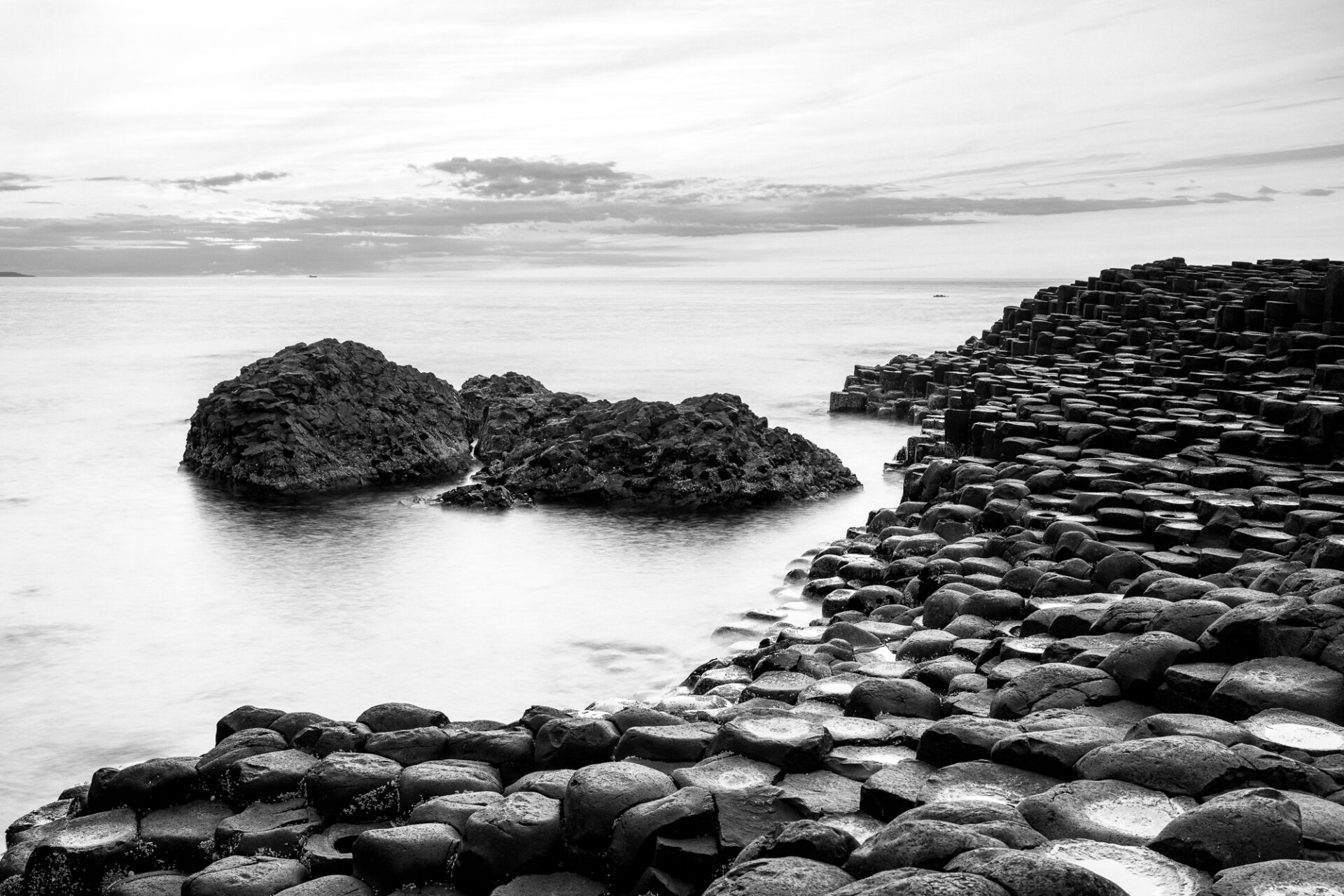
Stop 8: Dunseverick Castle
Dunseverich Castle is a 5th-century fort and ancient royal site of the Dál Riada Gaelic kingdom, located just a 12-minute drive from Dunluce Castle and a mere 6 mins down the road from the Giant’s Causeway.
Similar to the dramatic setting of Dunluce, the Dunseverick Castle is perched on a steep basalt stack over the Atlantic Ocean. While the ruins of Dunseverick Castle aren’t as well preserved as Dunluce, the historic significance and strategic importance of its location are unparalleled. It was said that Saint Patrick once visited the castle and was later involved in Viking invasions of 871 and 924.
As you stop to take in the rugged beauty of this coastal location, it’s easy to see why Dunseverick Castle was an important stronghold and point of defence for the area.
Stop 9: Ballintoy Harbour
Continuing for a few minutes along the Causeway Coast, you’ll come to the charming village of Ballintoy and Ballintoy Harbour. The picturesque harbour might look familiar to Game of Thrones fans, as this stunning location served as a backdrop for several scenes depicting the Iron Islands.
The sea stacks and rocky islands in the famous harbour make for a wonderful scenic walk, and the charming village is just one kilometre from the harbour. Take the time to visit the small shops, churches, and maybe a cozy pub for a refreshment.
Stop 10: Carrick-a-Rede Rope Bridge
The famous Carrick-a-Rede Rope Bridge is another must-stop spot on the Giants Causeway Coastal route in Northern Ireland. The highlight of Carrick-a-Rede is its famous rope bridge, which spans a 20-meter (66-foot) wide chasm between the mainland and the tiny Carrick-a-Rede Island.
First erected by salmon fishermen over 200 years ago, this bridge is suspended nearly 30 metres (100 ft) over the sea, offering visitors stunning views of Rathlin Island and the Scottish Islands. The rope bridge is open from 9am-5pm and tickets are available on the National Trust website.
But here is a bit of extra advice! A visit to Carrick-a-Rede is not just about a walk across the famous rope bridge. The bridge is situated within a designated Area of Outstanding Natural Beauty, and the surrounding coastal landscape is really breathtaking. Be sure you give yourself enough time to explore the area, walk along the coast, and take in the beauty of the area.
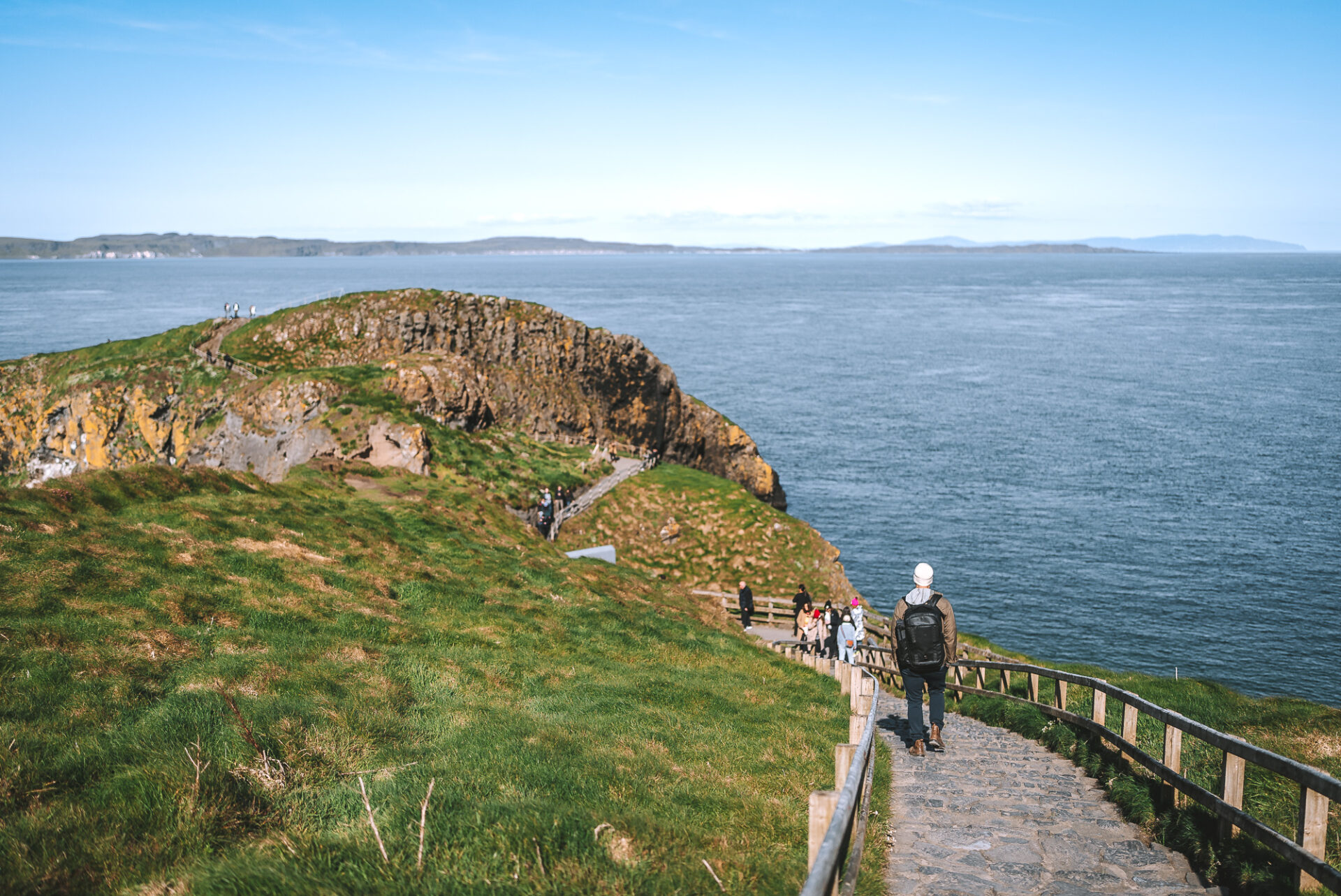
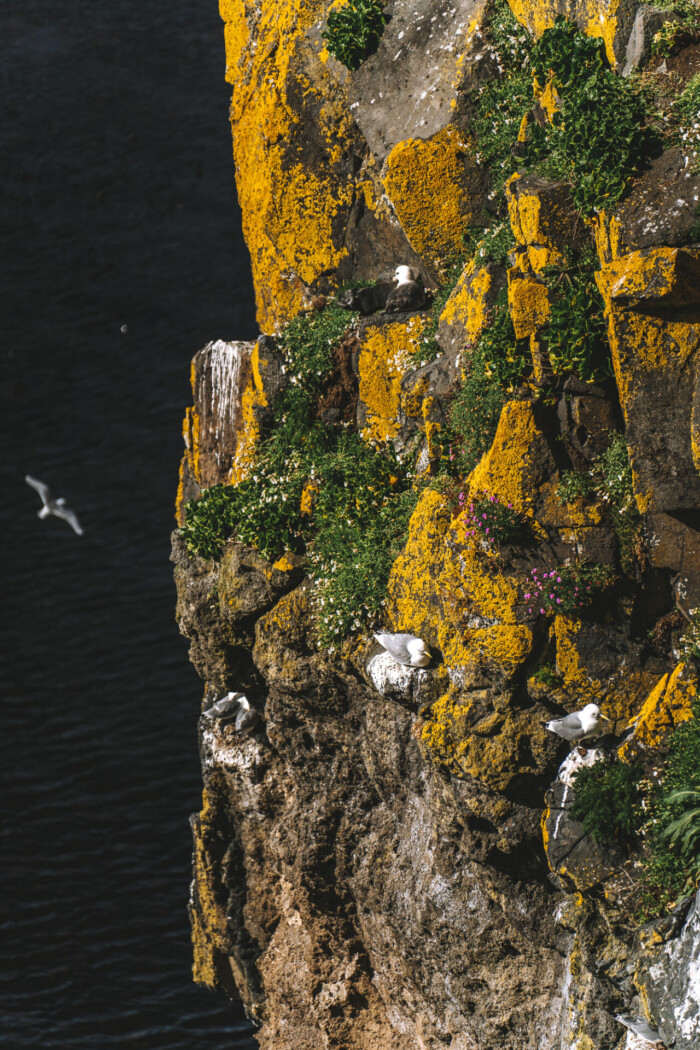

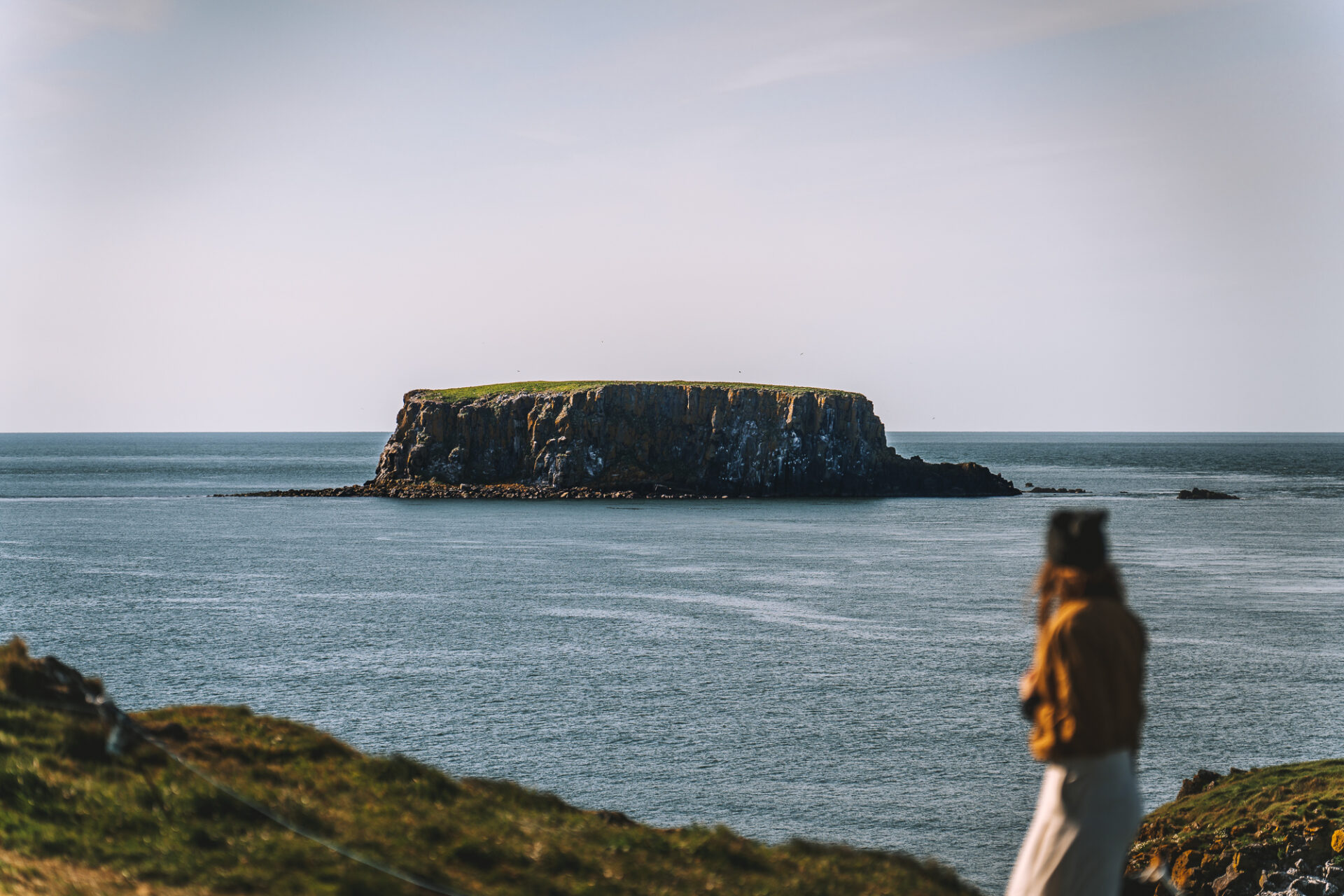
Stop 11: Ballycastle
Rich with heritage and scenic views of the north Antrim coast, the picturesque town of Ballycastle is full of charming storefronts and historic buildings and boasts a thriving culinary scene. Ballycastle Beach is perfect for a leisurely stroll to a viewpoint out over the stunning coastline.
The coastal village has plenty of attractions, and one of the best ways to take in as much as possible is with the Ballycastle Heritage Trail. This self-guided walk takes you through the historic town, telling the story of how Ballycastle was founded and its progress through the centuries.
Ballycastle can be a quick pit stop on your road trip along the Causeway Coastal Route, but it’s also another perfect place for an overnight stay.
The Salthouse Hotel
During our road trip, we stayed at the Salthouse Hotel, just outside of Ballycastle, a beautiful lux eco-friendly property that offers breathtaking views of the Atlantic Ocean. The hotel features 24 spacious, bright bedrooms and suites, each with seaside charm and modern comforts.
We particularly loved the hotel’s on-site restaurant, its sophisticated but relaxed setting, with a great menu featuring locally sourced ingredients such as locally caught seafood fresh from the pier.
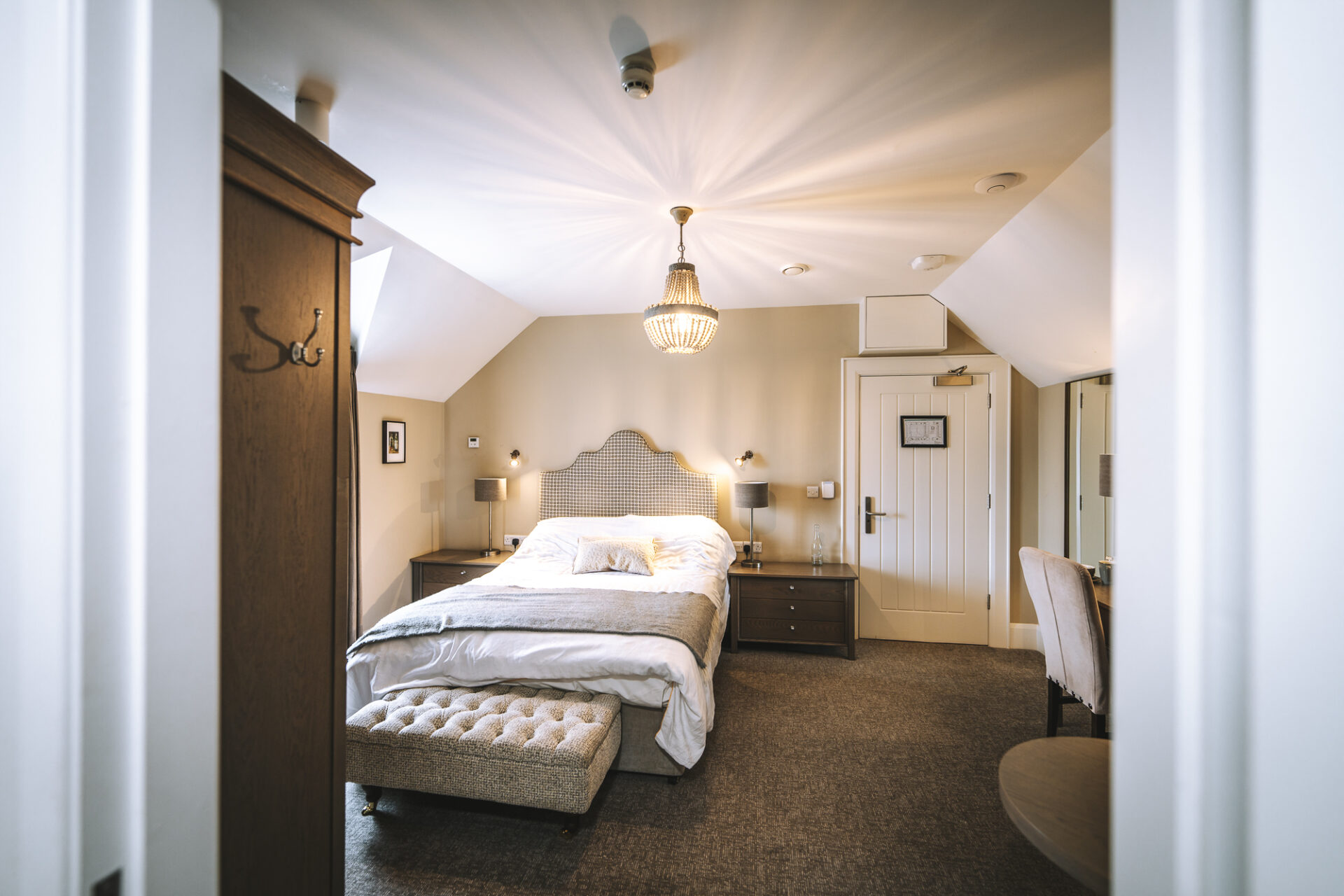
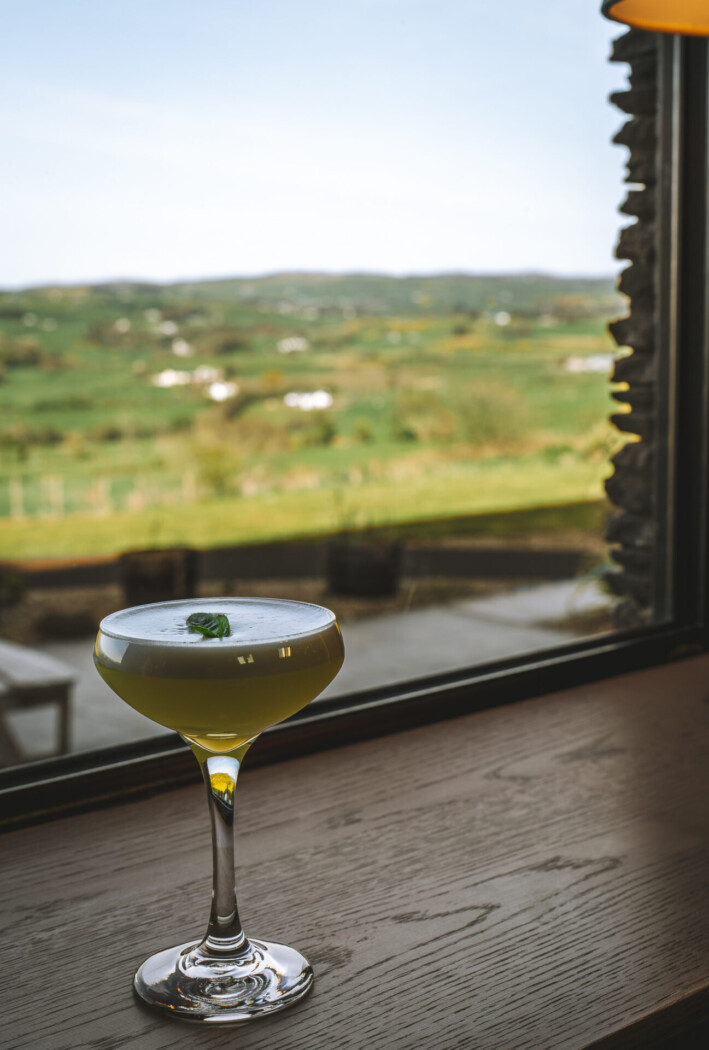


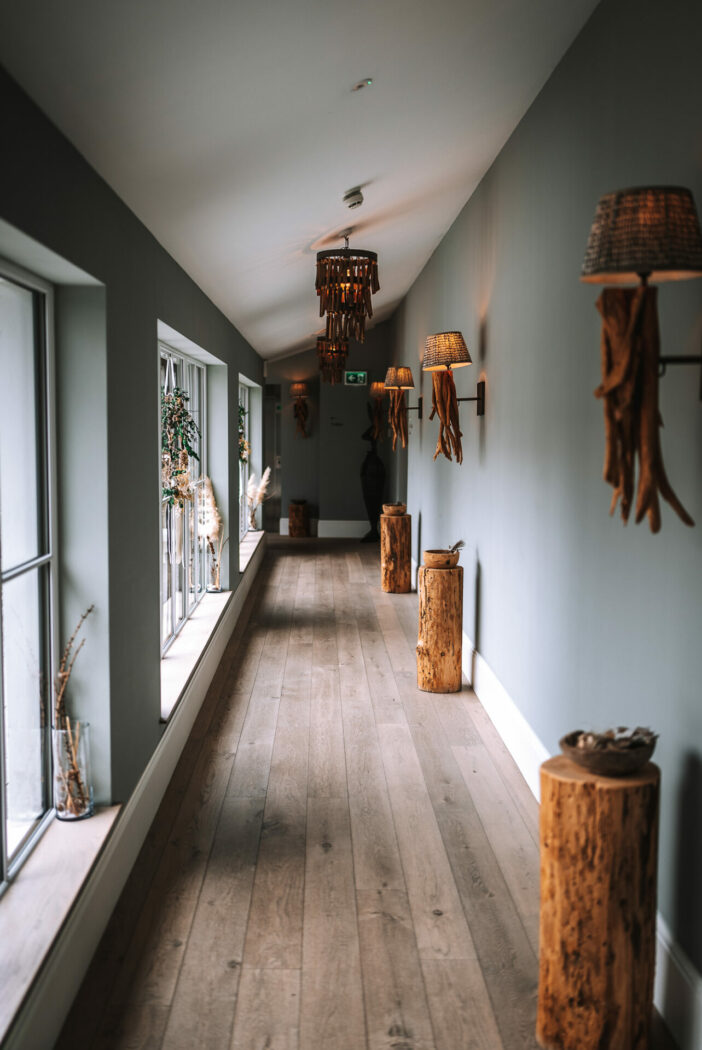
Stop 12: Dark Hedges
Located along Bregagh Road, near the village of Armoy, the Dark Hedges is a picturesque avenue of beech trees that creates a unique and picturesque setting. But it’s not just the trees that have made this spot one of the most popular attractions in Northern Ireland. The Dark Hedges gained popularity after appearing in “Game of Thrones.”, where the avenue was used as the backdrop for the Kingsroad, an important passage in the Seven Kingdoms.
The Stuart family planted the trees along the road in the 18th century to provide a grand approach to Gracehill House, their Georgian mansion. As the beech trees grew, their intertwined branches formed a picturesque yet mysterious tunnel.
Thousands of visitors make a point of visiting the Dark Hedges during their time in Northern Ireland. Many arrive on tour buses as the spot is included in a lot of the day trip itineraries from Belfast. So needless to say, this is a popular attraction that tends to get very busy.
If you want to have the place to yourself, plan to visit at sunrise or after sunset. The Dark Hedges are stunning at daybreak and evening when the light pours through the trees and illuminates the path. Fall is beautiful when the leaves turn crimson, orange, and gold.
In an attempt to avoid the crowds and get unique shots at this popular spot, we opted to visit the Dark Hedges late at night. The avenue of beech trees was only 15 mins away from the Salthouse Hotel where we were staying and it felt like an easy trip to make after dinner. It was a great decision, as the road was completely empty, and we got a chance to play around with some cool artificial lighting to make our shots of the road even coolers.

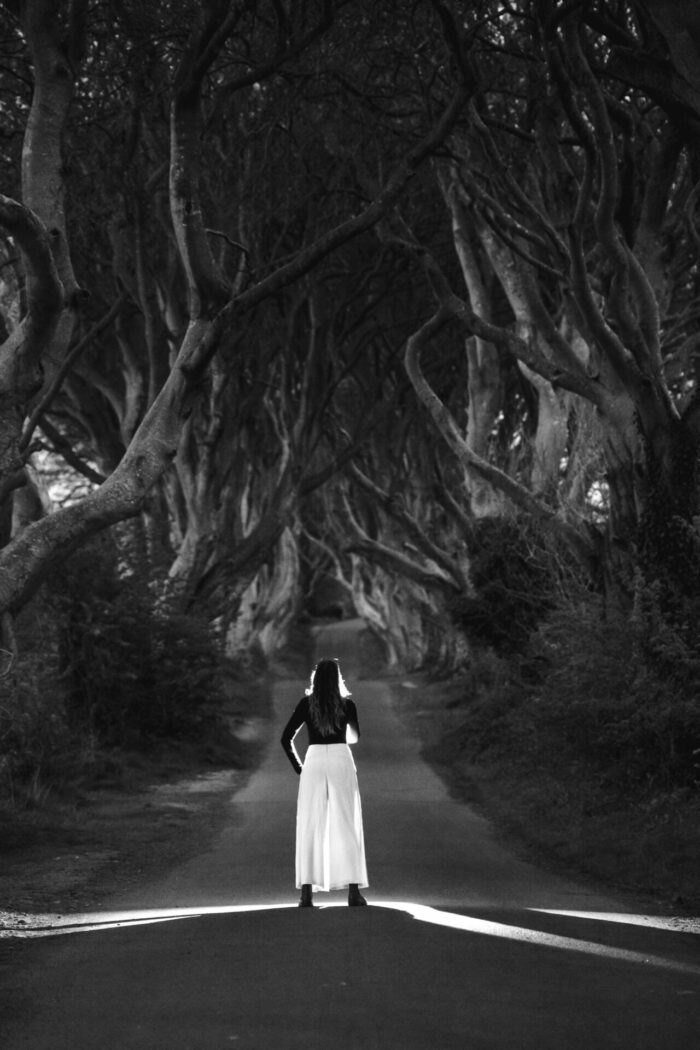
Note that to shoot at night, you will need a tripod, as an iPhone on its own just won’t do in this situation.
Stop 13: Torr Head Road
For a scenic detour from the main Causeway Coastal Route, consider taking Torr Head Road, which runs from Ballycastle to Cushendun.
The scenic drive was one of our favourite sections of the Causeway Coastal Route. We loved navigating the narrow winding roads with stunning views of the rugged coastal landscapes of dramatic cliffs.
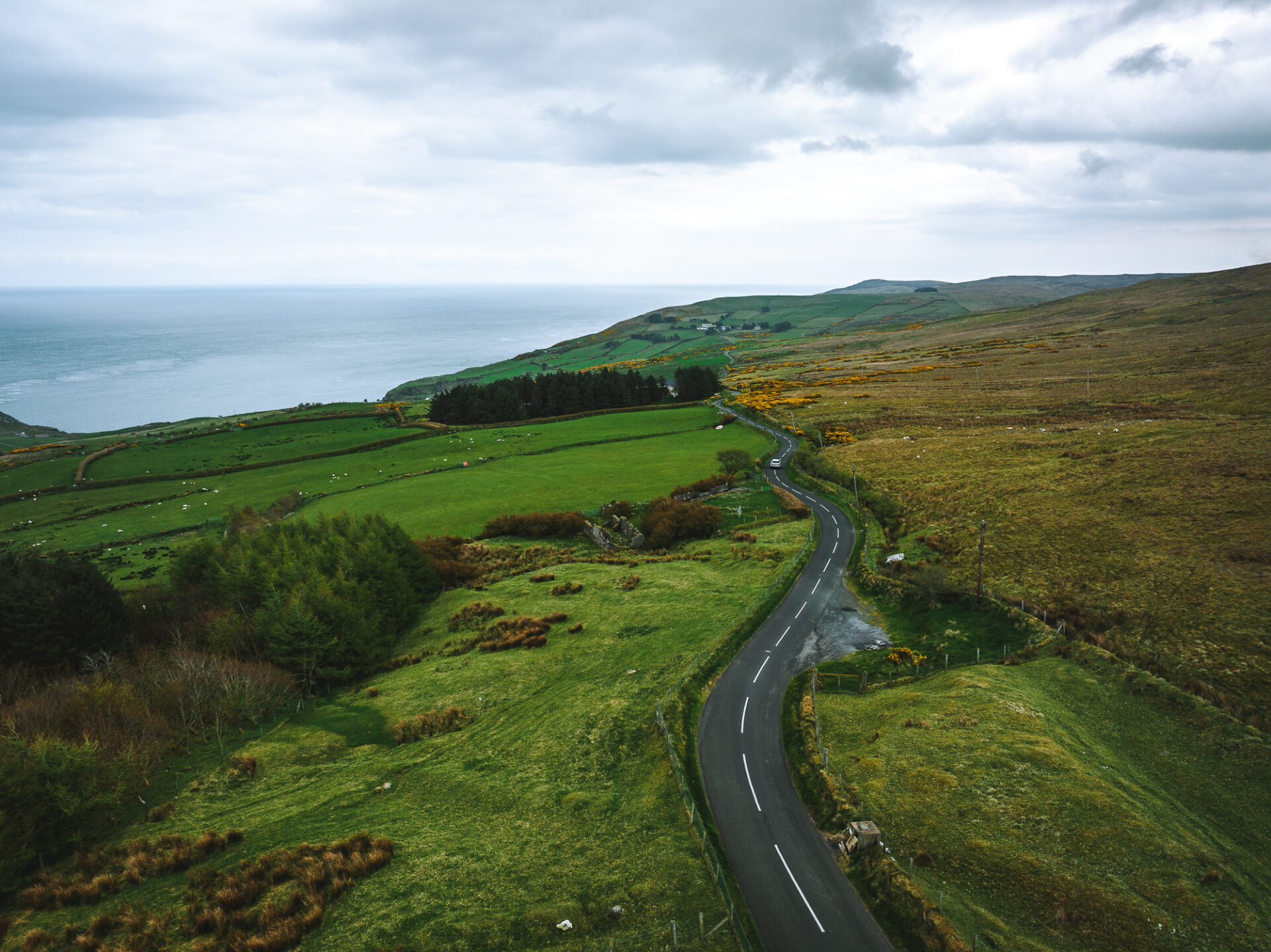
Stop 14: Cushendun
Located at the mouth of the River Dun, Cushendun is a picturesque village with characteristic Georgian architecture, lovely coastal scenery, and interesting history. The village is relatively new, having been built in 1912 to resemble a Cornish village. Over time, the village grew to include rows of whitewashed cottages, a church, and a neo-Georgian house.
While the current village is a bit over a century old, there are castle ruins in the area dating back to the 14th century. There are also a few standalone buildings dating to the early 19th century, including the Glenmona House and the beautiful old sandstone church originally built for the Protestant gentry in the area.
For us, the highlight of this little village was the Cushendun Caves, a nearby attraction and a famous backdrop to a number of scenes in the Game of Thrones. Surprisingly, there was no one else at the caves during our visit. It was the quietest Game of Thrones attraction we’ve come across in all of Northern Ireland.
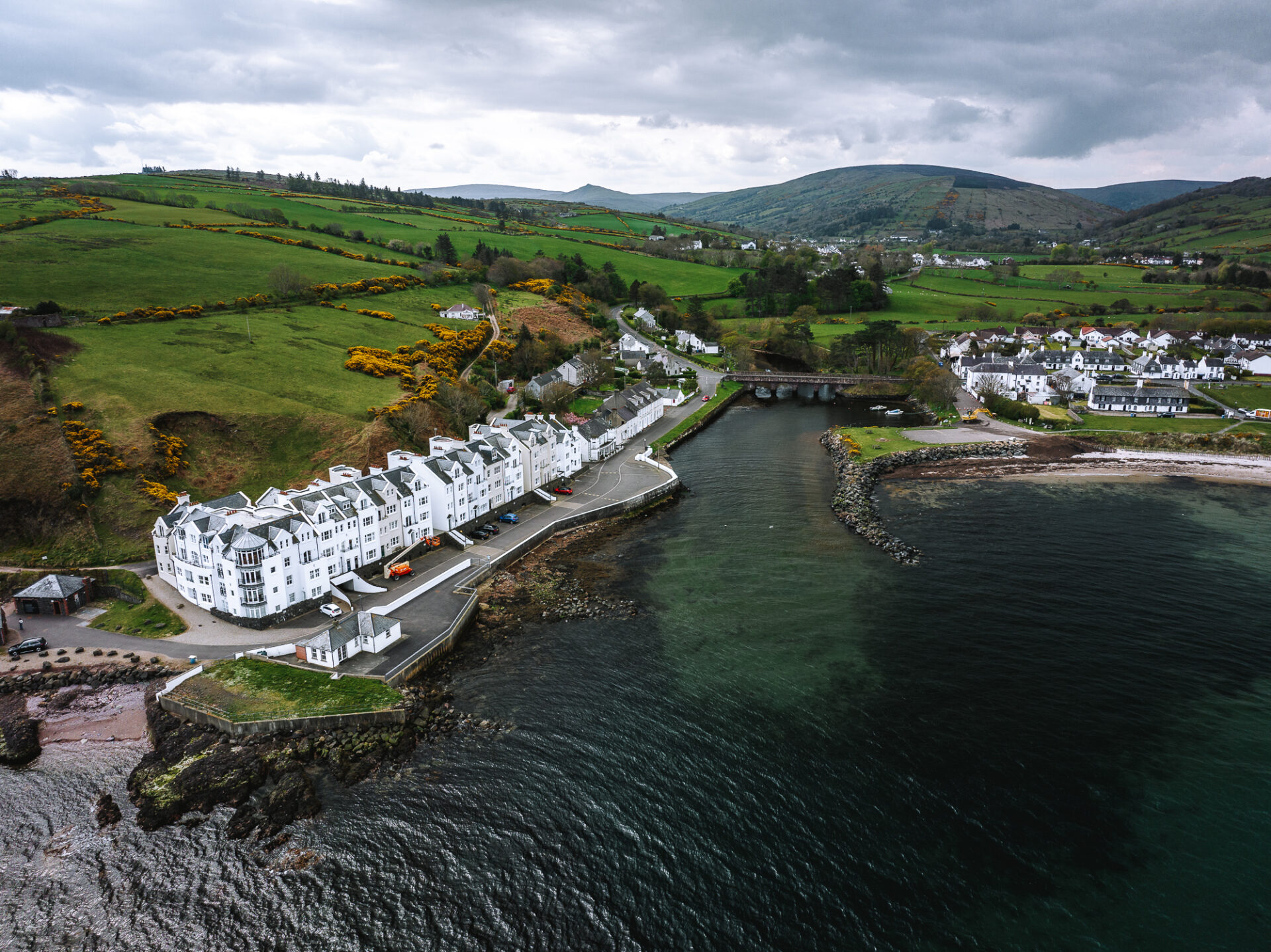
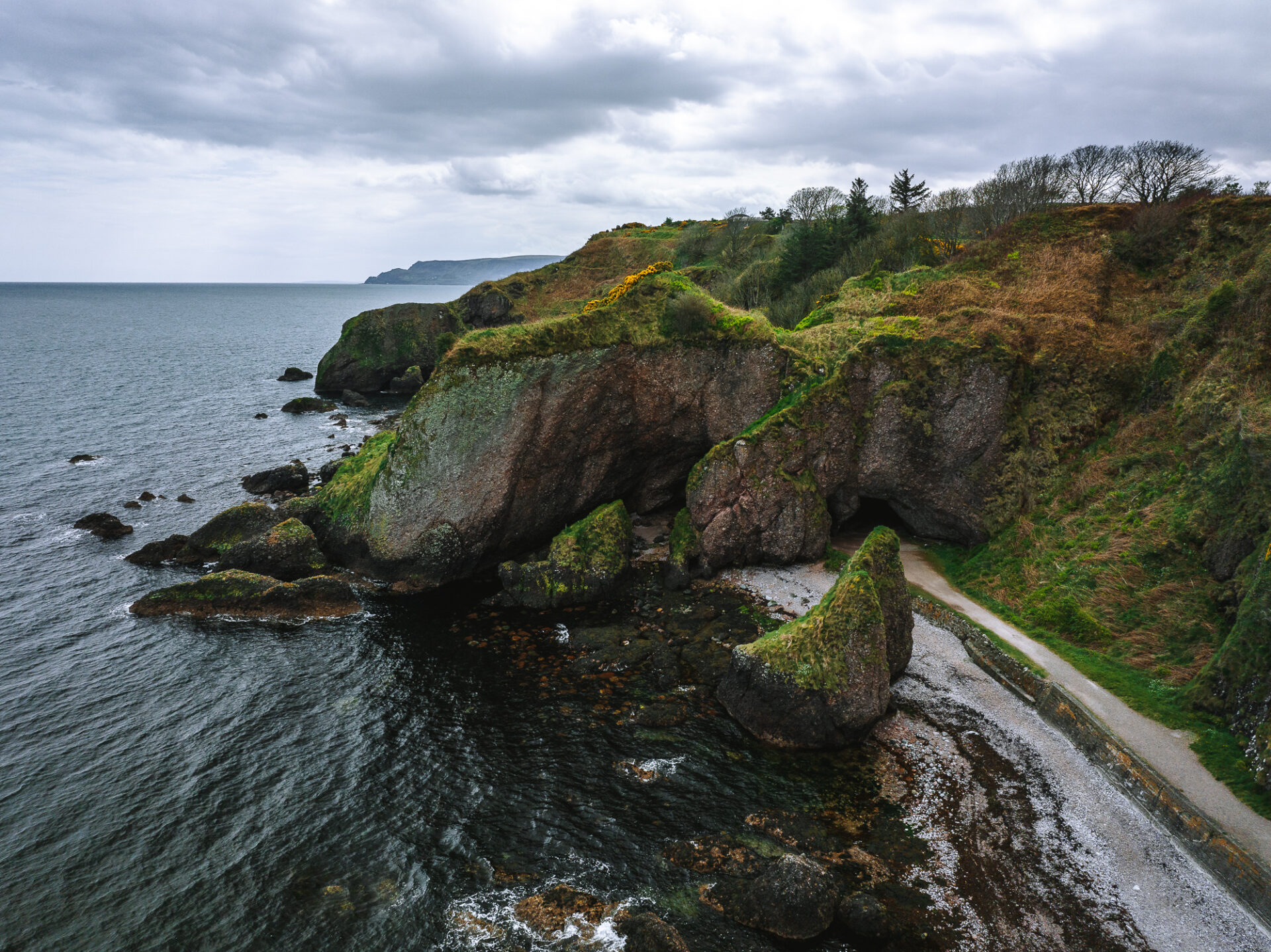
Stop 15: Glenariff Forest Park
From Cushendun, we recommend continuing along the Coastal Causeway to Glenariff Forest Park, home to spectacular waterfalls, rocky gorges, and calm lakes. The 1000-hectare park has trails of varying levels of difficulty and plenty of picnic areas for relaxing. There is a car park available for visitors, just pay attention to the operating hours as the gates are normally locked by dusk.
We enjoyed a little stop for lunch at Laragh Lodge Restaurant. The dining room offered views of the park, and the lodge serves as the perfect launching point for hiking in the area. The trails vary in length and difficulty, so there is something for everyone. You can take a quick 5-minute stroll to a small waterfall, known as Ess-Na-Crub Waterfall, a 15-20 minute walk to a bigger waterfall or grab a day pack and set off on a longer hike through the Forest.
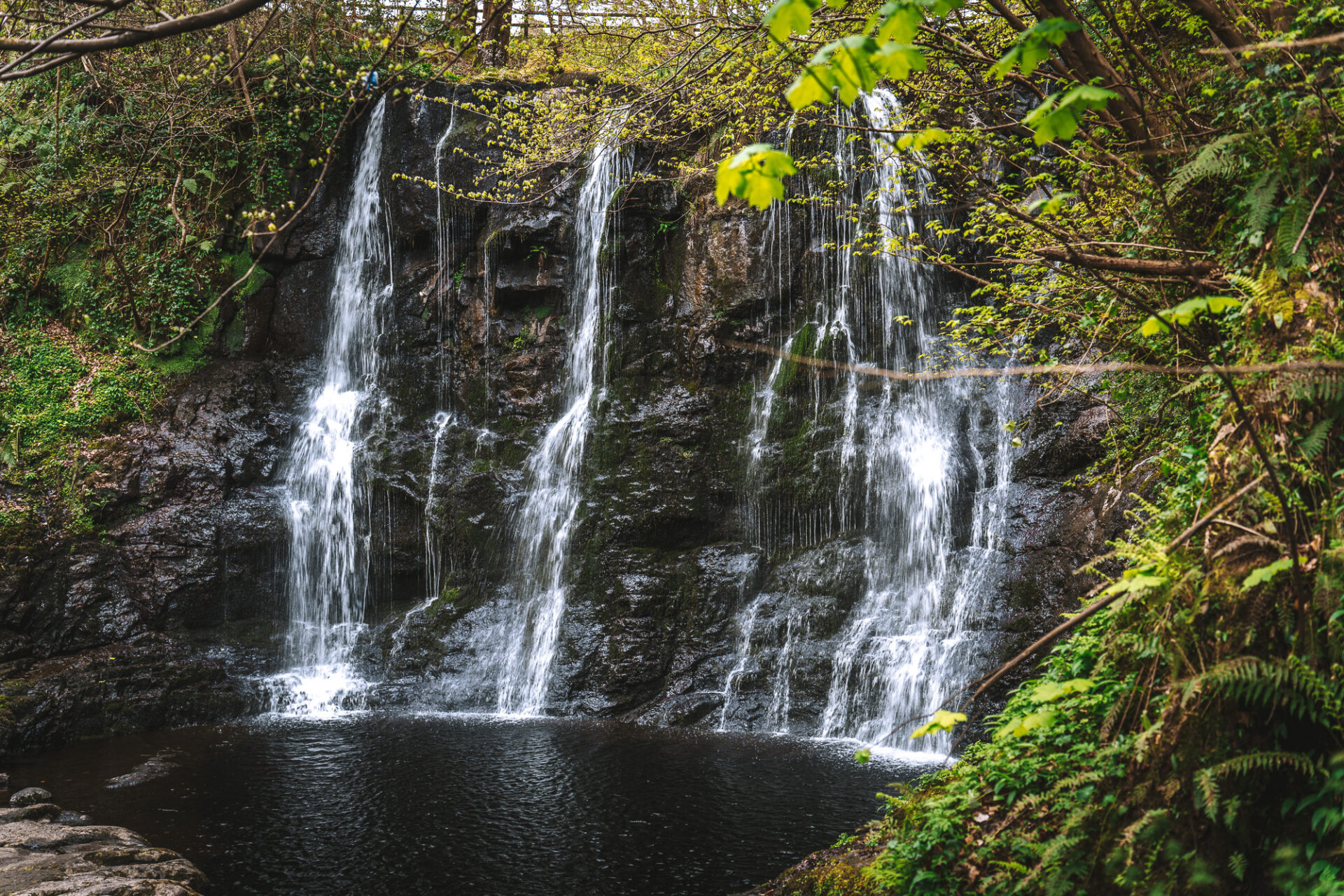
Stop 16: Cushendall
The drive along the Causeway Coastal route passes through the charming village of Cushendall, located among the Nine Glens of Antrim. This area stretches inland from the coast and is considered to be an area of outstanding natural beauty.
Established during the 1600s, the village of Cushendall is characterized by its historic Georgian buildings and the surrounding natural beauty.
Stop 17: Carnlough
Nestled at the foothills of Glencoy (one of the nine Glens of Antrim), Carnlough village is famous for its harbour, where several scenes for Game of Thrones were filmed. The harbour has a stony staircase leading into the sea, which was featured in the show.
While the harbour is worth a visit, definitely take a stroll through the village to see the local shops, and historic buildings, and pop into one of Carnlough’s traditional pubs for a bite. If you’re up for an adventure, take the 2 km hike to Cranny Falls, a wonderful vantage point over Carnlough Village.

Stop 18: Glenarm
Next stop is the village of Glenarm, one of the oldest chartered towns in the area with a significant history. With over 50 historic buildings, a 16th-century castle with stunning walled gardens, and the nearby enchanted Glenarm forest, the town is a must-stop on any Causeway Coastal Route itinerary.
Our favourite attraction was definitely the Glenarm Castle, home to the Earls of Antrim since the 17th century. The Castle is open from 9am to 5pm daily and guided tours are offered on selected dates throughout the year.
As it is a private residence, make sure you plan ahead and book your visit. Make sure to visit the amazing gardens on site, which have provided the castle with fresh fruit and vegetables for over 400 years.

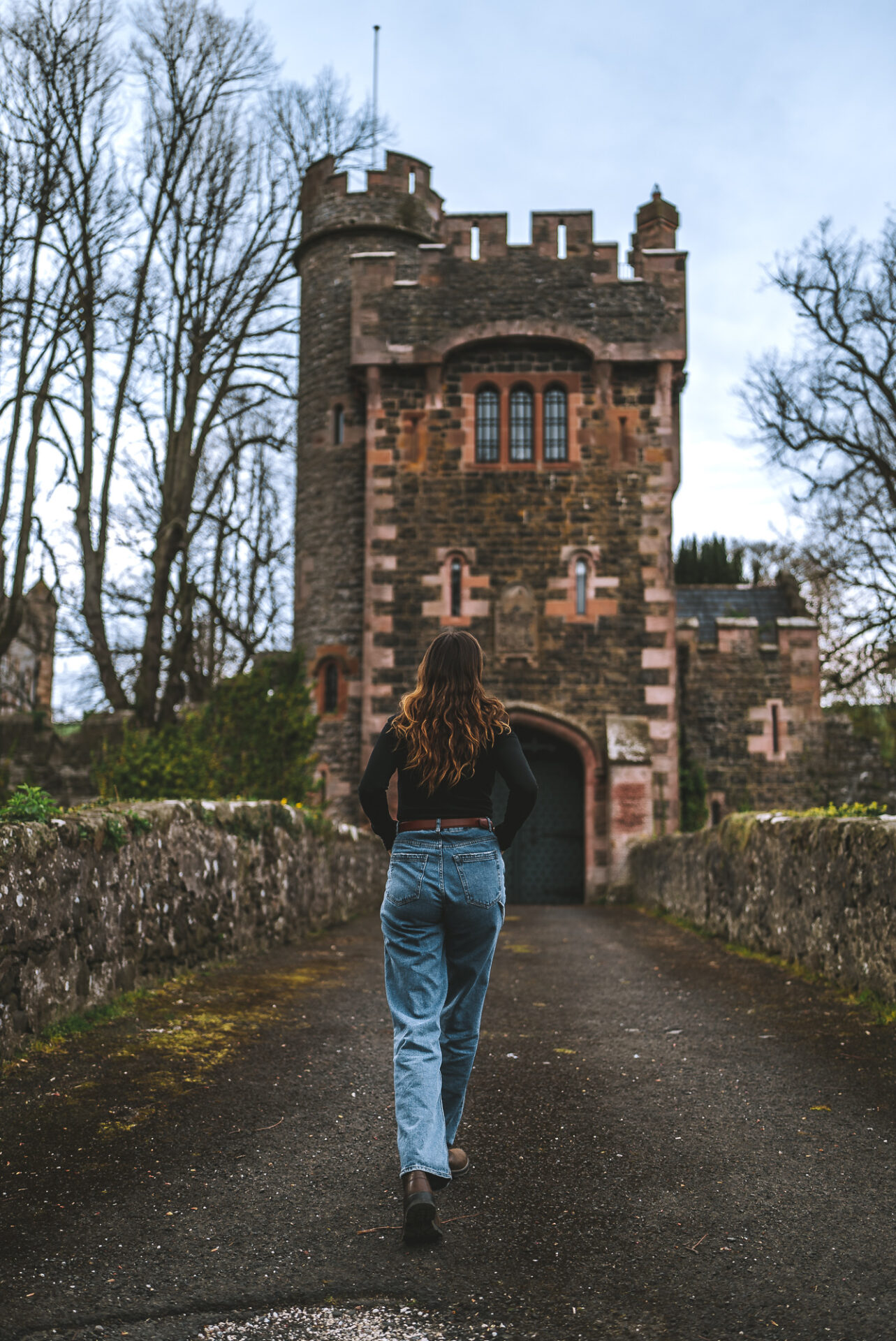
Stop 19: Carrickfergus Castle
Situated on the north coast of Belfast Lough, Carrickfergus Castle has over 800 years of history. This impressive property is strategically positioned and almost completely surrounded by water. The castle has long and impressive military history and has been meticulously restored to its original Norman style.
A military hub until as late as 1928, Carrickfergus Castle now houses historical exhibitions, including cannons dating back to the 17th century. There is a small fee to tour the castle, and you are able to go up onto the battlements for spectacular views of Belfast Lough.
Stop 20: Gobbins Cliff Walk
In our opinion, there is no better way to experience the Causeway Coast than by stepping foot on the Gobbins Cliff Walk. Designed by a 19th-century engineer, the Gobbins path was intended as a unique attraction and a new way to see the dramatic Antrim coastline.
The 5 km coastal path is a trail carved into the rocky cliffside. It features suspension bridges and caves, plus a staircase and tunnels. The walk was way cooler than we could have imagined, despite the chilly weather.
The experience of walking on the path was probably the best outdoor activity we embarked on in all of Northern Ireland. The sight of powerful waves crashing against jagged rocks, and the sounds of sea birds nesting in the crevices of the cliffs, all add to this immersive cliffside experience. Such a unique way to experience the beauty of this coastline – a must-do on your Causeway Coastal Route Itinerary.
The Gobbins Cliff Walk can only be done on tour, and booking in advance is required. The tours are guided with special considerations taken for safety. The path is rocky and uneven, so sturdy hiking boots are recommended (a limited number of boots are available for rent at the Visitor Centre). Tennis shoes/trainers are not permitted on the Gobbins Cliff Walk, so we hiked in our Blundies – the perfect footwear for this adventure!
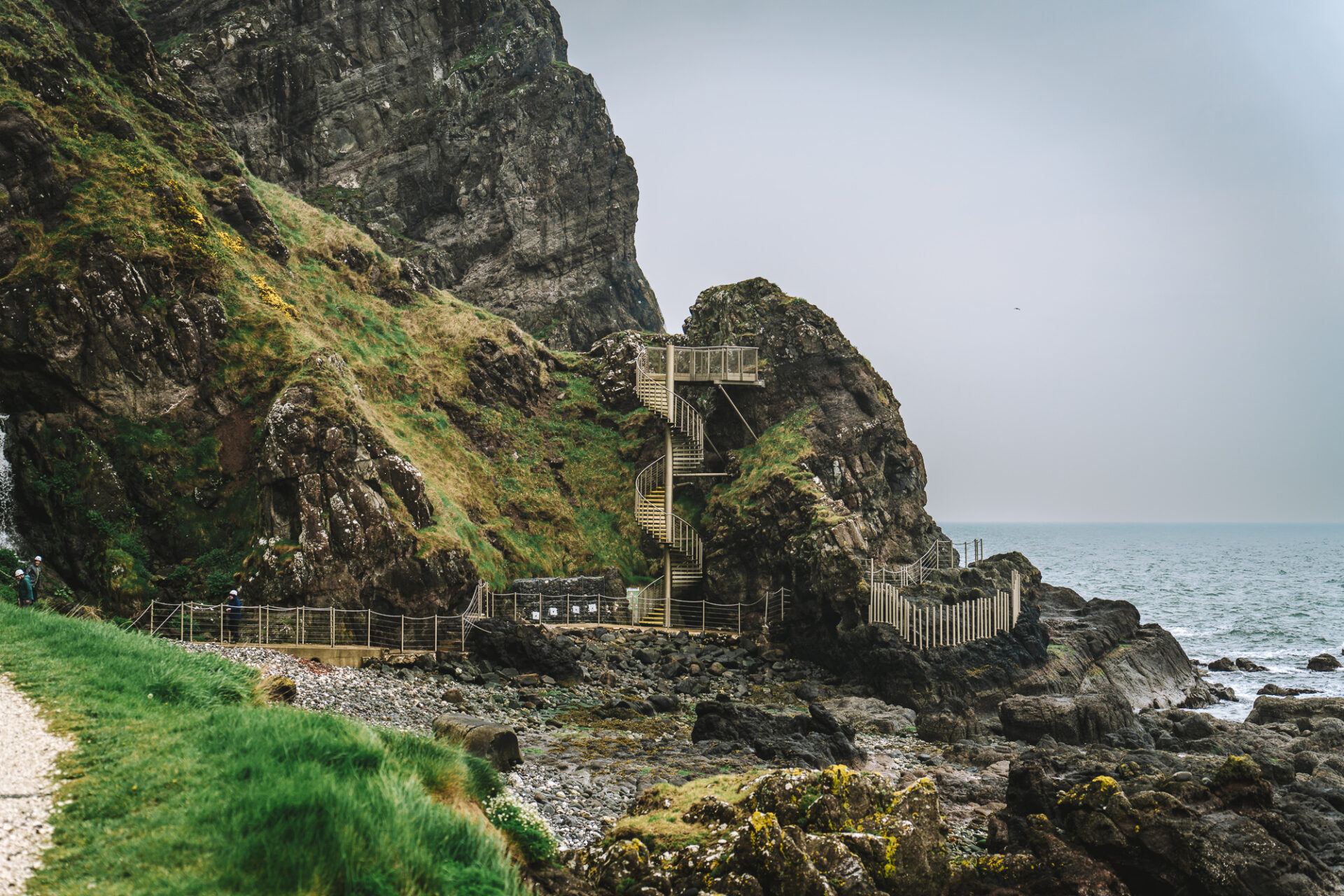
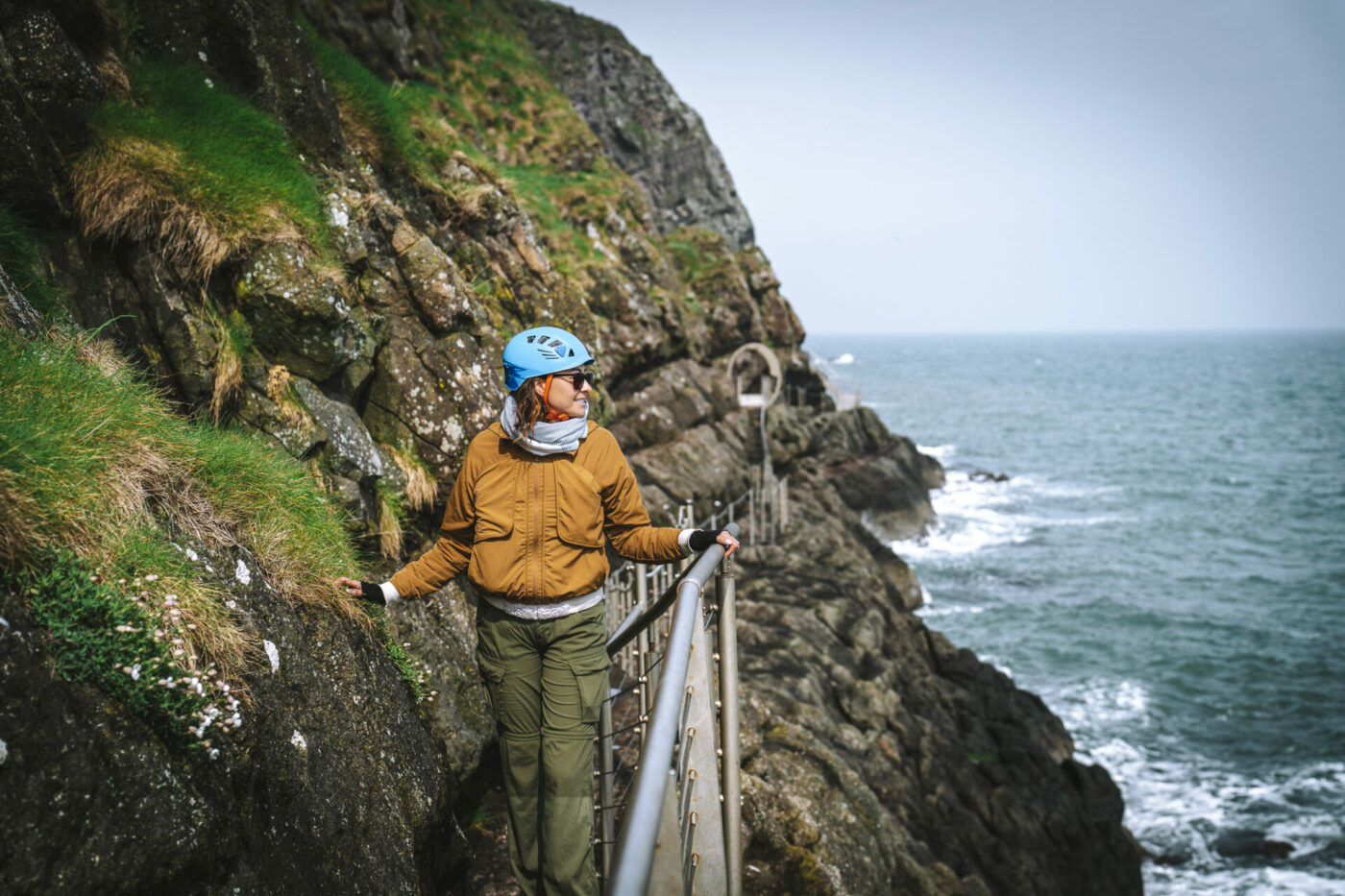
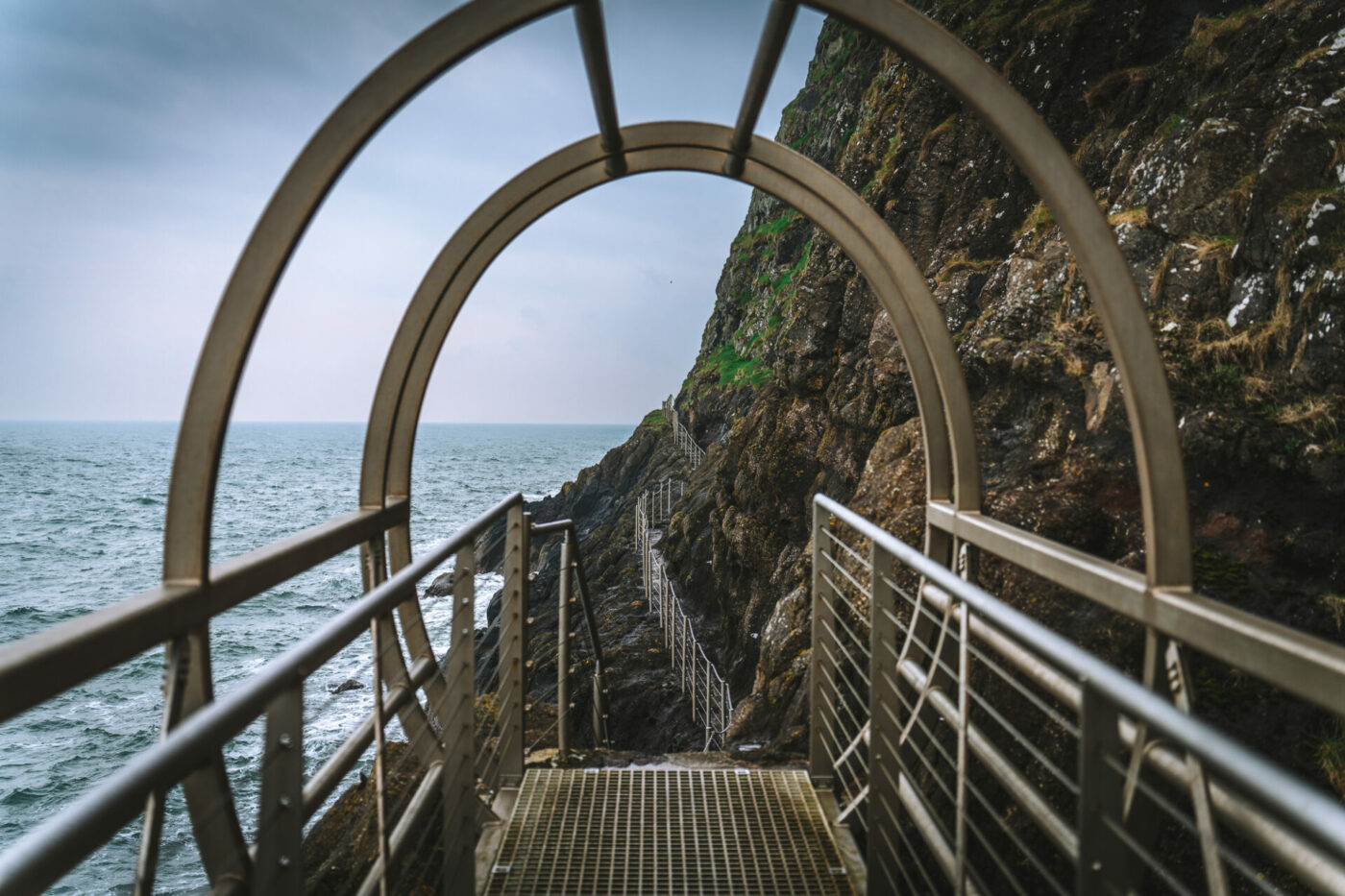
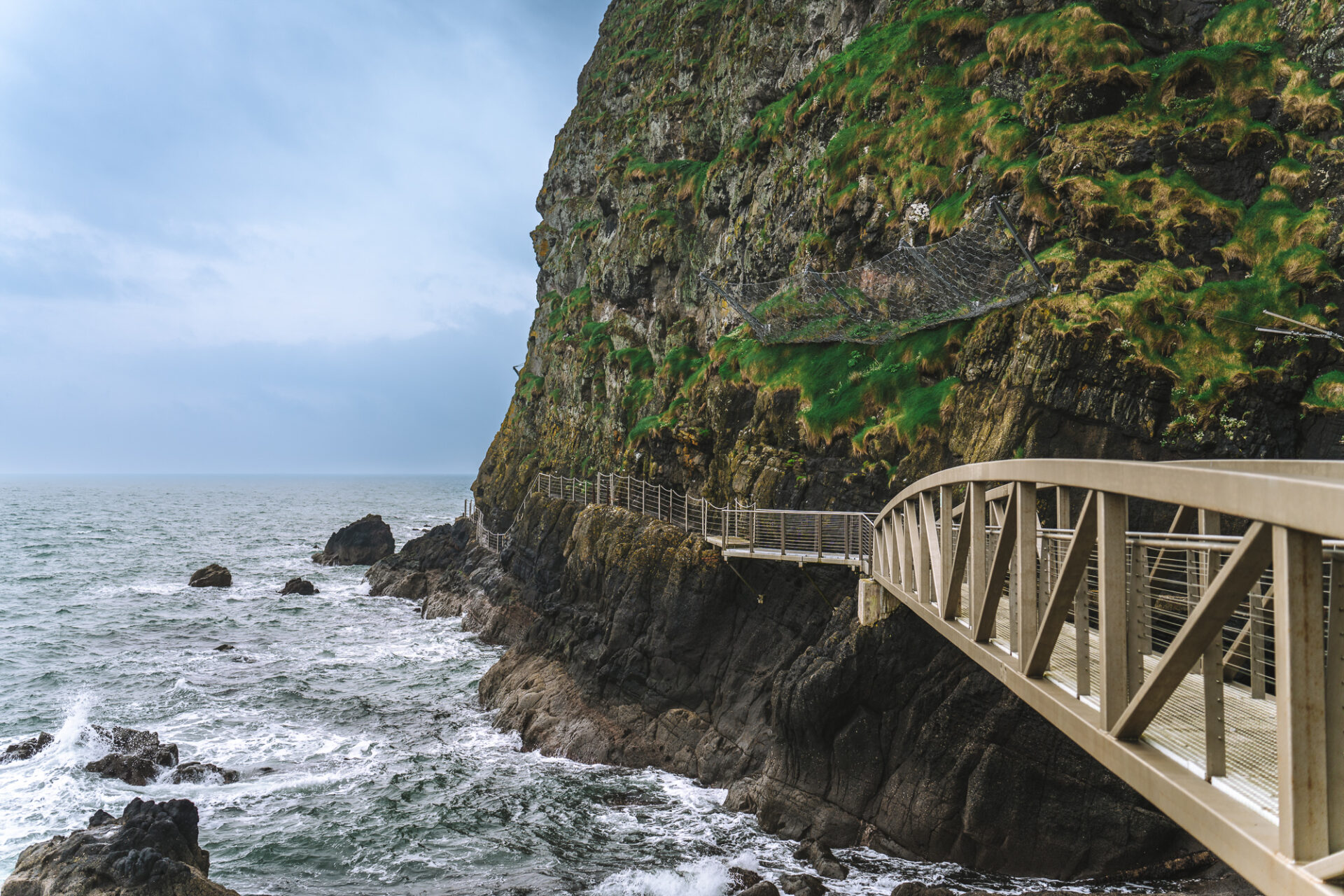
Stop 21: Belfast
Your Coastal Causeway adventure ends (or begin) in Belfast. Now the capital city of Northern Ireland, the Belfast area has a history that predates the Bronze Age. While there is still evidence of this ancient history, the city is now a lively modern centre for commerce, higher education, and entertainment in Northern Ireland. Renowned as the birthplace of the Titanic, Belfast has a hip, young vibe that’s hard not to love!
We found Belfast to be very pedestrian-friendly. We racked up over 20,000 steps while exploring the city. Public transportation is, of course, also available and is easily accessible. Rental bikes are available all over the city, and over 60% of the taxi service Value Cabs are now low-emission.
Over the years, Belfast has taking steps towards sustainable tourism, and several Green Tourism accredited attractions can be found in and around the city.
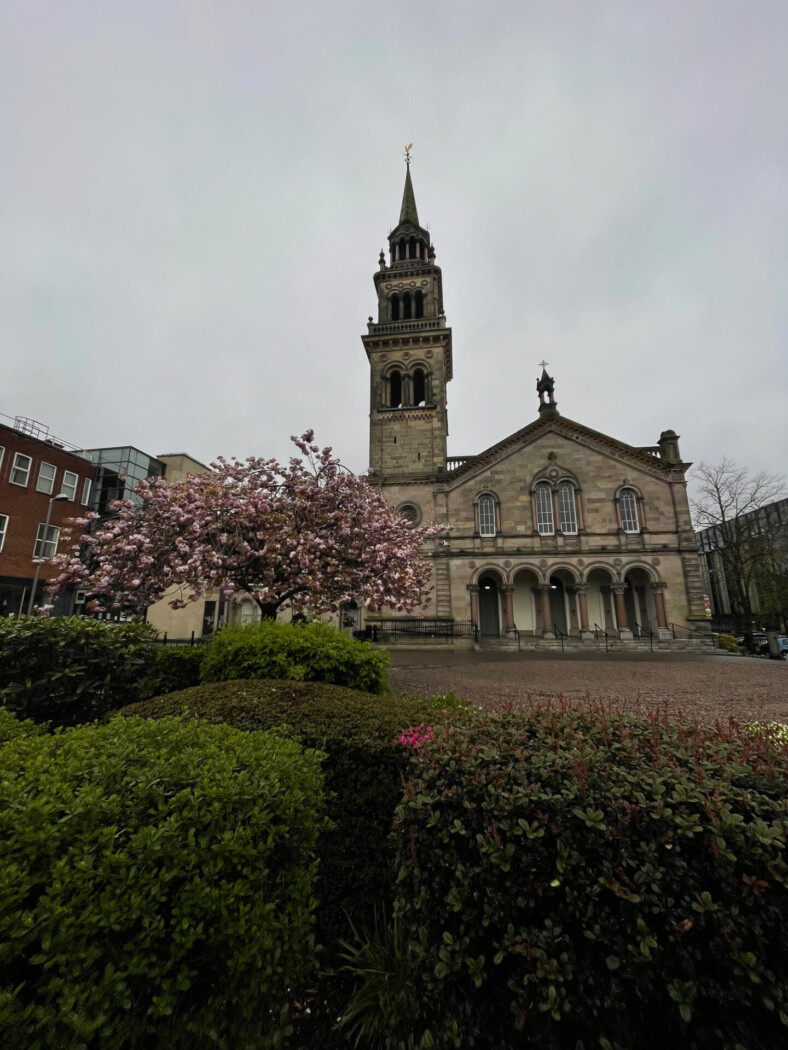

Where to Stay in Belfast: Harrison Chambers of Distinction
The Harrison Chambers of Distinction is a hidden gem nestled in Belfast’s charming Malone Road neighbourhood. This is not your average hotel—it’s a swanky boutique spot that oozes luxury and style.
With 16 individually themed rooms, the Harrison Chambers of Distinction is all about embracing uniqueness. Each room tells its own story and has its own personality. Picture lavish four-poster beds ensuite bathrooms with those powerful rainforest showers, and if you go all out and book a suite, you’ll even find a Victorian-style standalone bathtub in your room.
The basic comforts are taken care of – Wi-Fi is fast and breakfast is included in the price. Want to relax and order breakfast in bed? No problem, that’s included too, because as the owner, Melanie, explained to us – it’s a luxury that everyone needs to enjoy on a daily basis!
The downstairs bar is a happening spot where you can meet other hotel guests (they often have really interesting people staying at the hotel) or chat with the staff over well-deserved evening drinks. The hotel has the coolest vibe, trust us, this is THE spot to stay in Belfast!
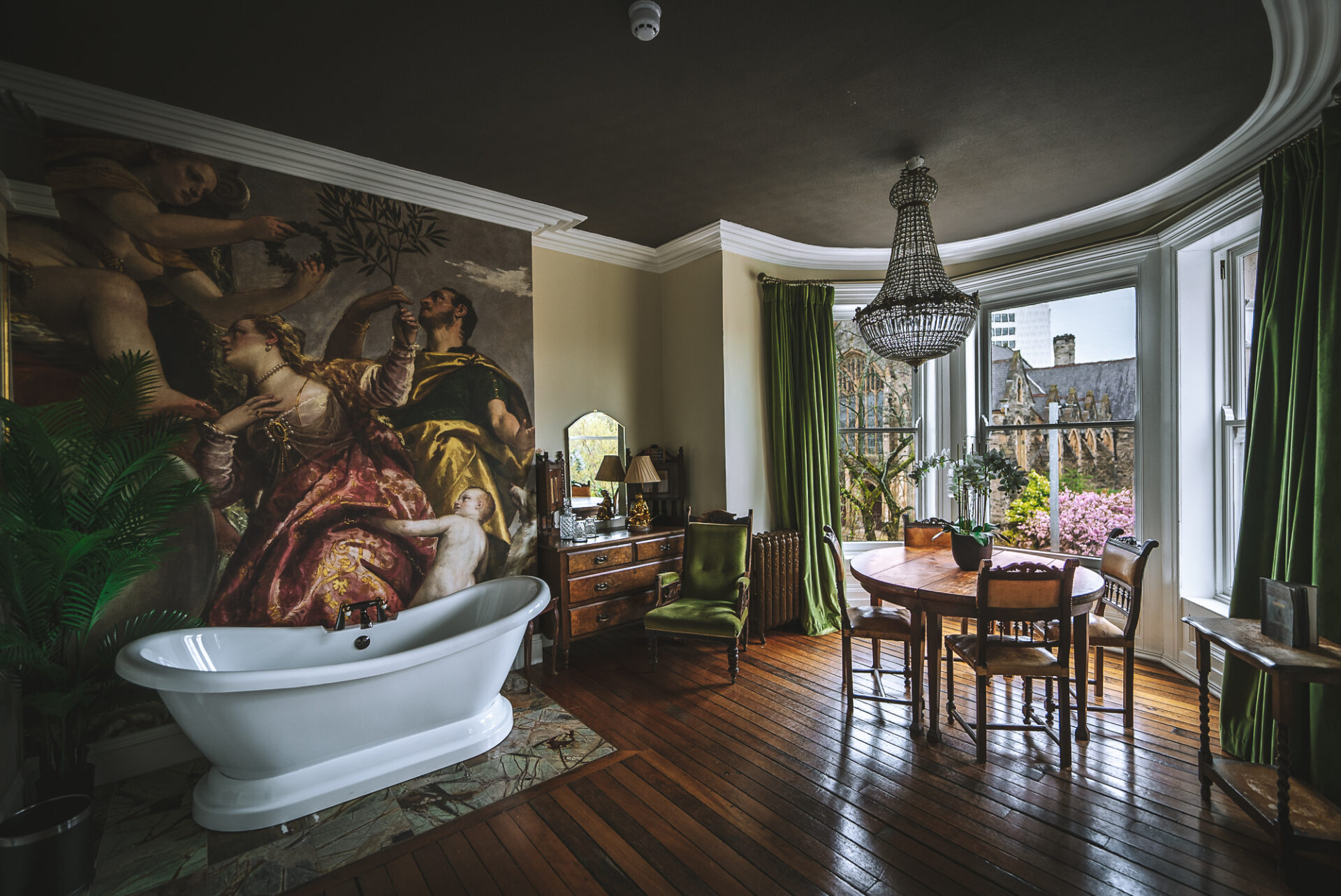



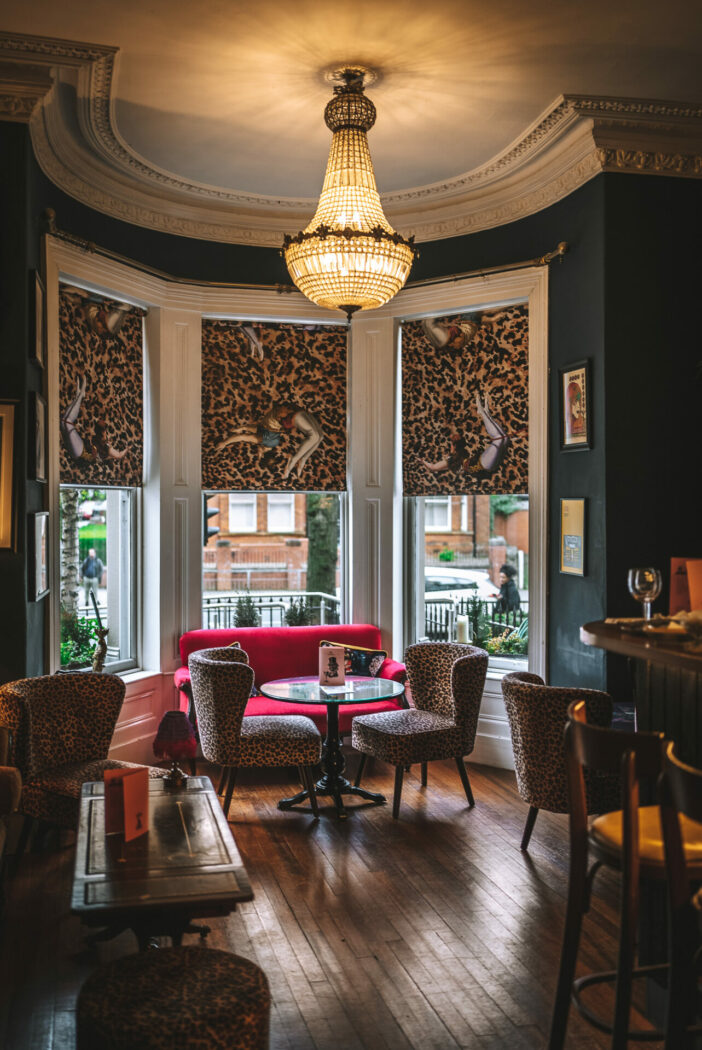
Things to do in Belfast
If you’re short on time, make sure to visit a few of the major attractions that are unique to Belfast.
We spent a lot of time in the cultural district of Queen’s Quarter. Home to some Victorian-style architecture and the famous Botanic Gardens, the area is located next to Queens University Belfast
The Botanic Gardens were established in 1828 and feature an early example of a glasshouse, which still houses a variety of tropical plants and birds of paradise.
Titanic Belfast is an award-winning attraction constructed on the spot where the famous ship was designed, built, and launched. A self-guided immersive experience brings the ship’s story to life, using CGI to illustrate the ship’s cabins, dining areas, engine rooms, and deck promenade. It’s more than a museum, but an interactive, immersive experience through the history of the Titanic. Make sure to book tickets in advance because this attraction is very popular!
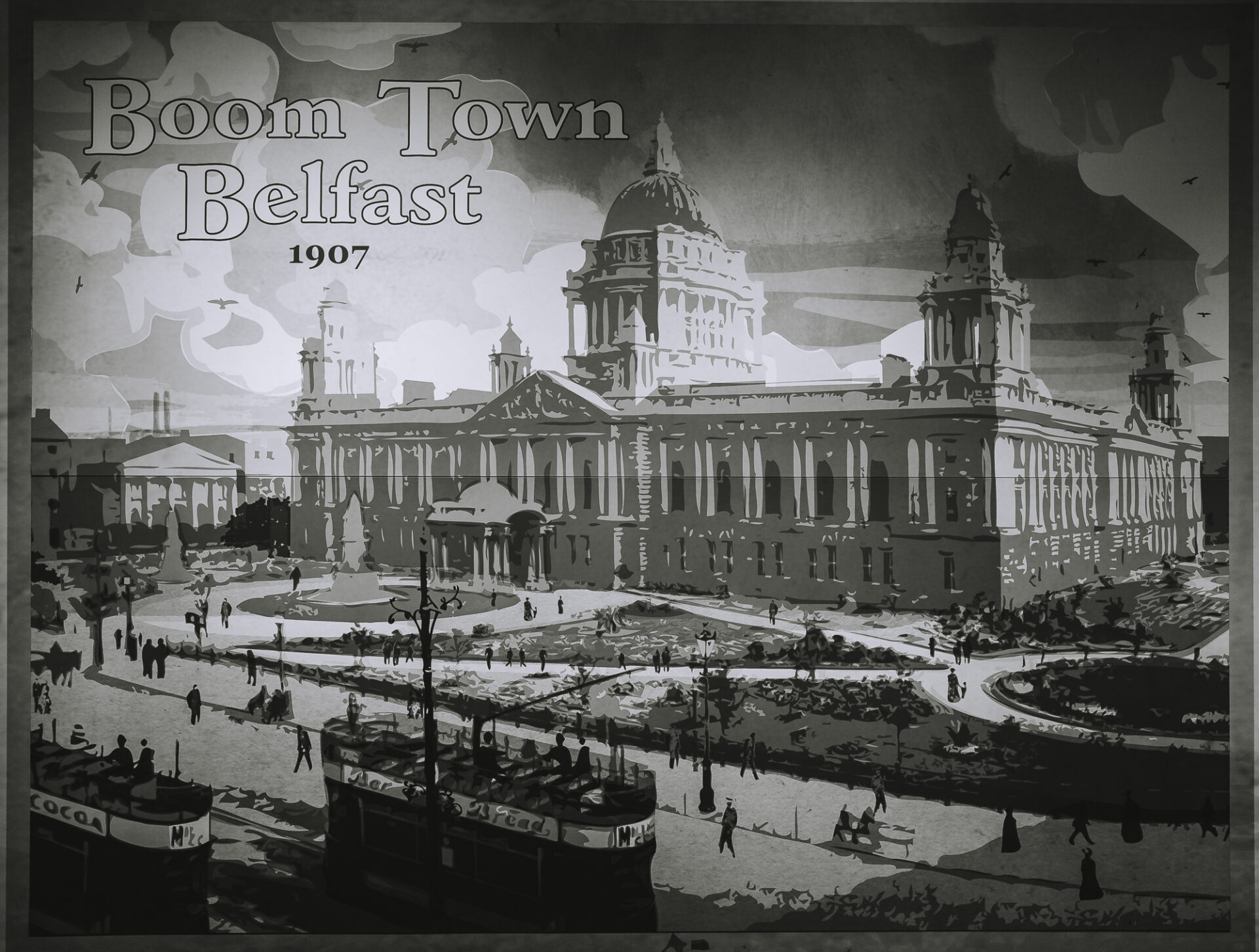
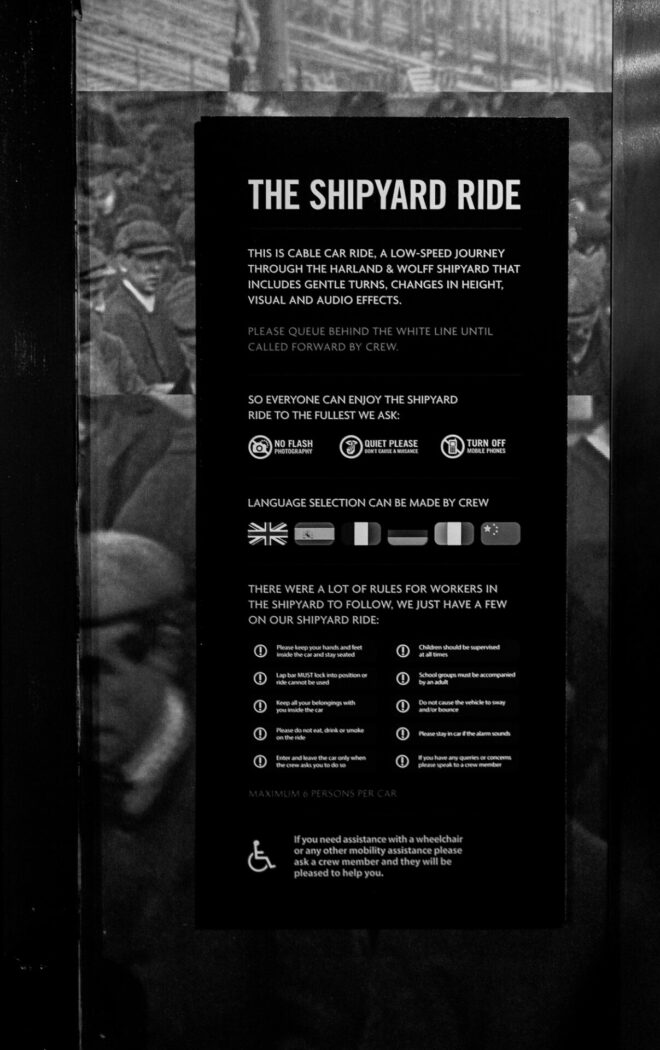
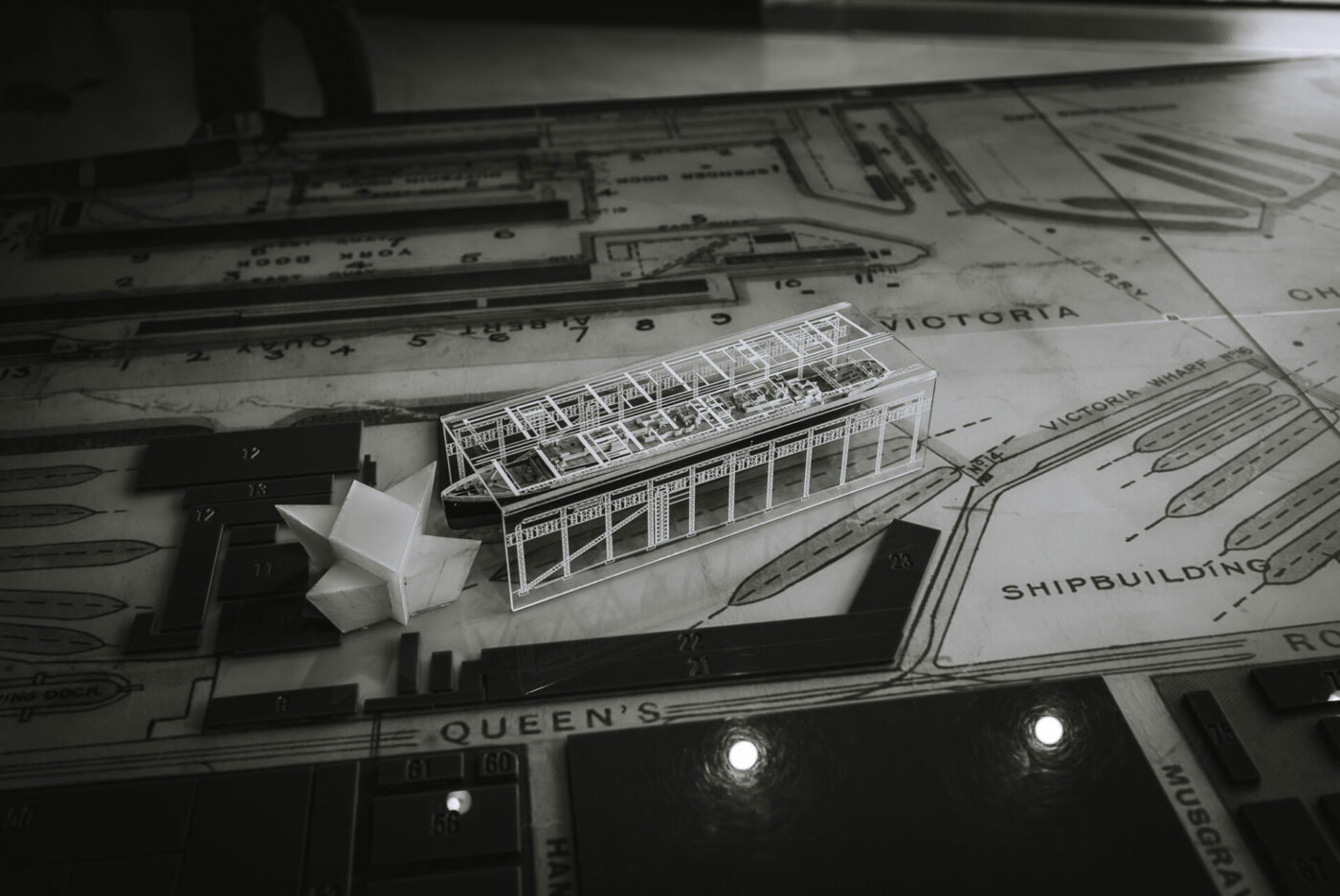
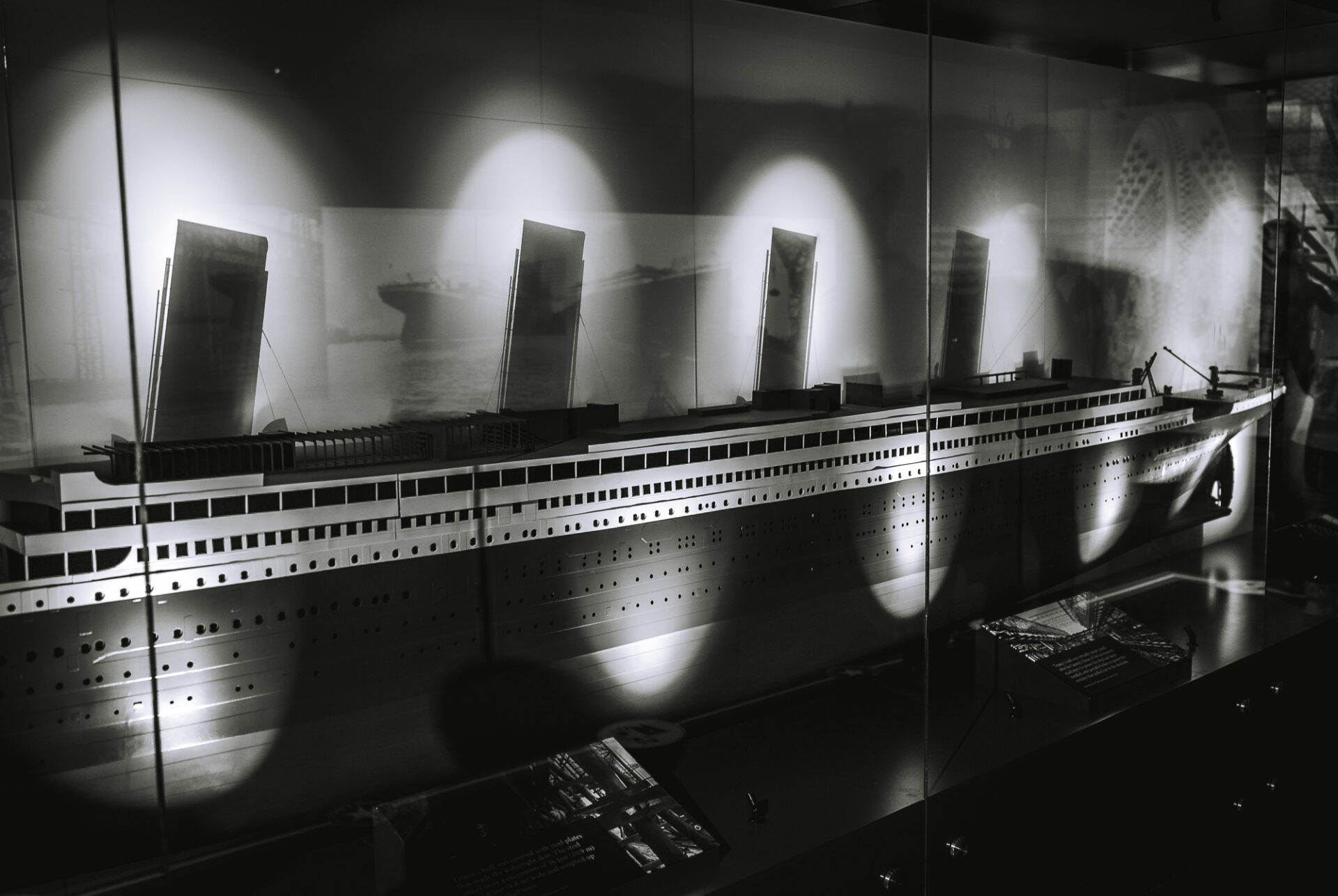
Not far from the Titanic Experience, you’ll find the newest distillery in Belfast – the Titanic Distillers. Recently opened, this is the first whiskey distillery to return to Belfast after a century-long hiatus. Situated in the Thompson Dock and Pumphouse, this working distillery showcases the heritage of the Thompson Graving Dock, where the magnificent Titanic was once constructed. The distillery offers fully guided whiskey and spirit tastings along with distillery and dock tours.

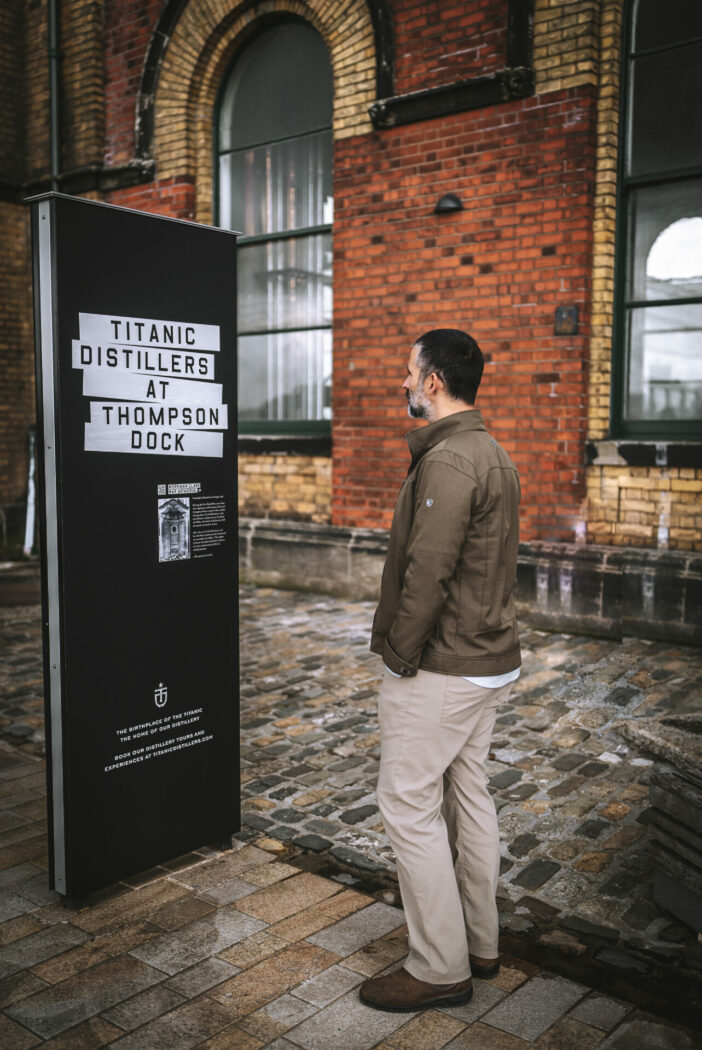

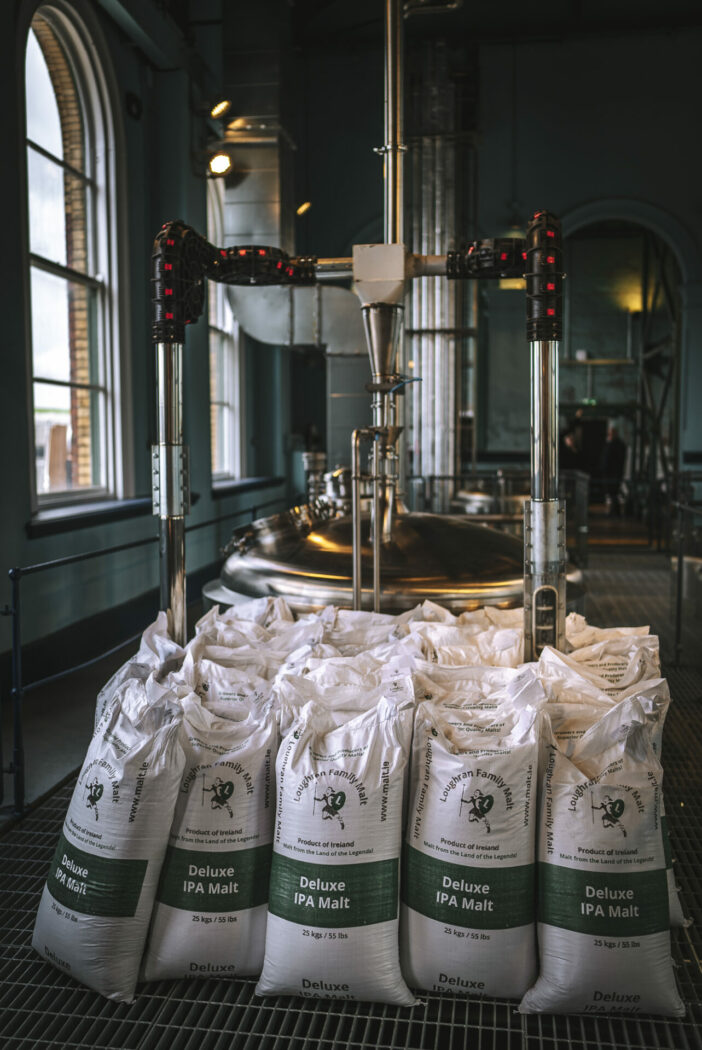
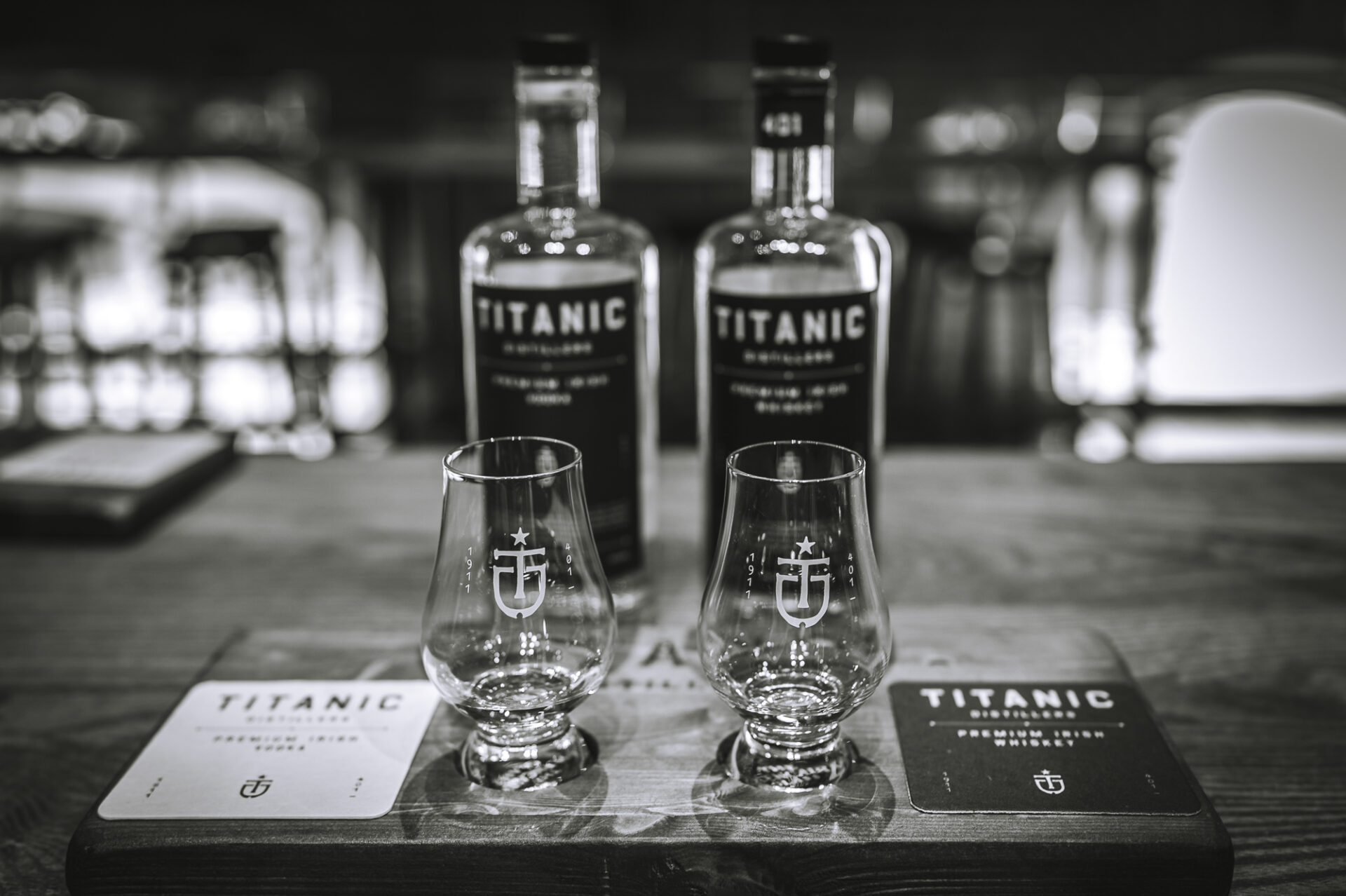
One of Belfast’s oldest attractions, St. George’s Market, is another popular spot to visit. Operating on Friday, Saturday, and Sunday, the market has been serving the city for over a century and offers a mix of local products, arts and crafts, food and specialty products. But don’t come here expecting a cute tourist hipster spot. This is the heart of the local community, a place where locals come to grab a bite with their families or to stock up on produce.
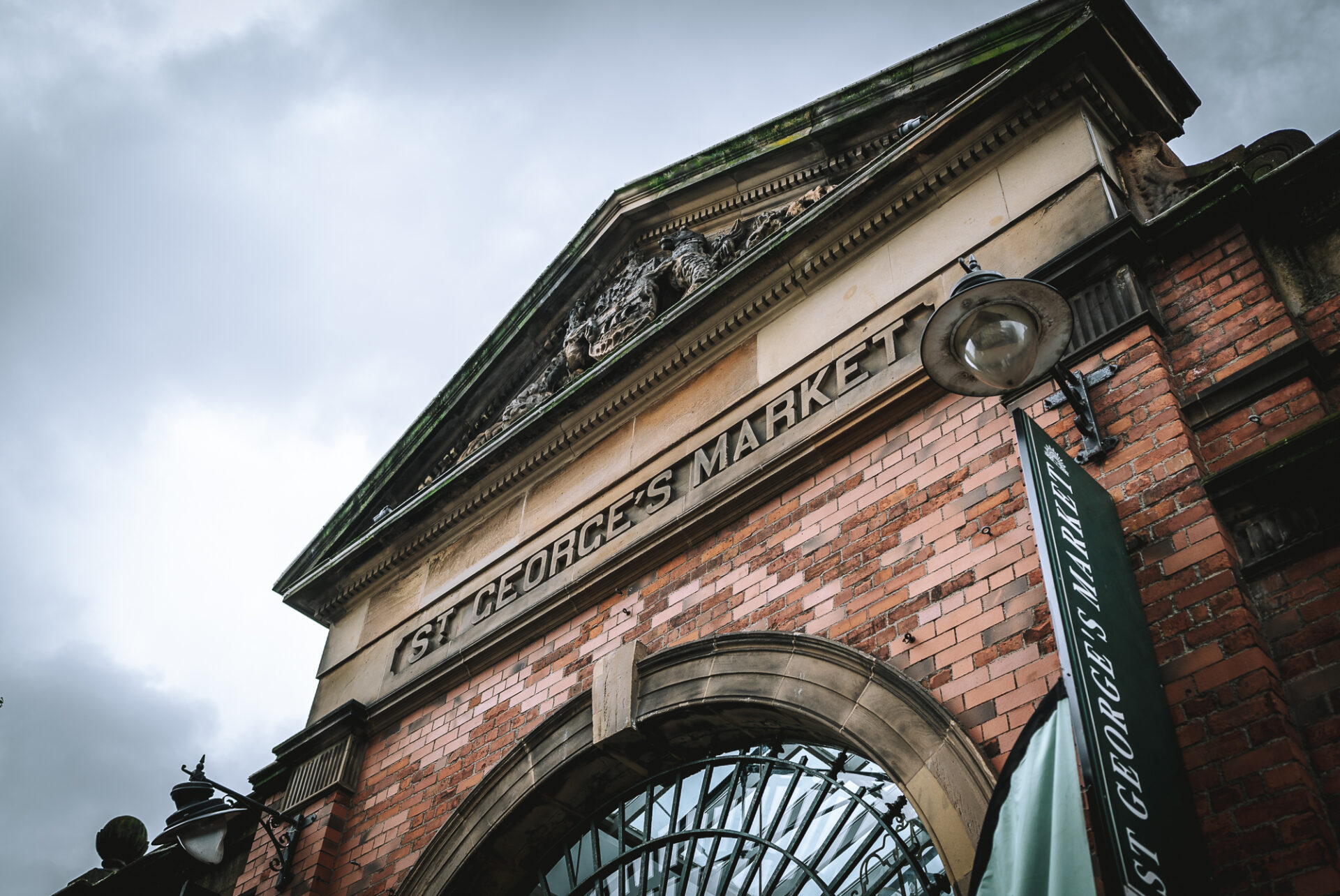
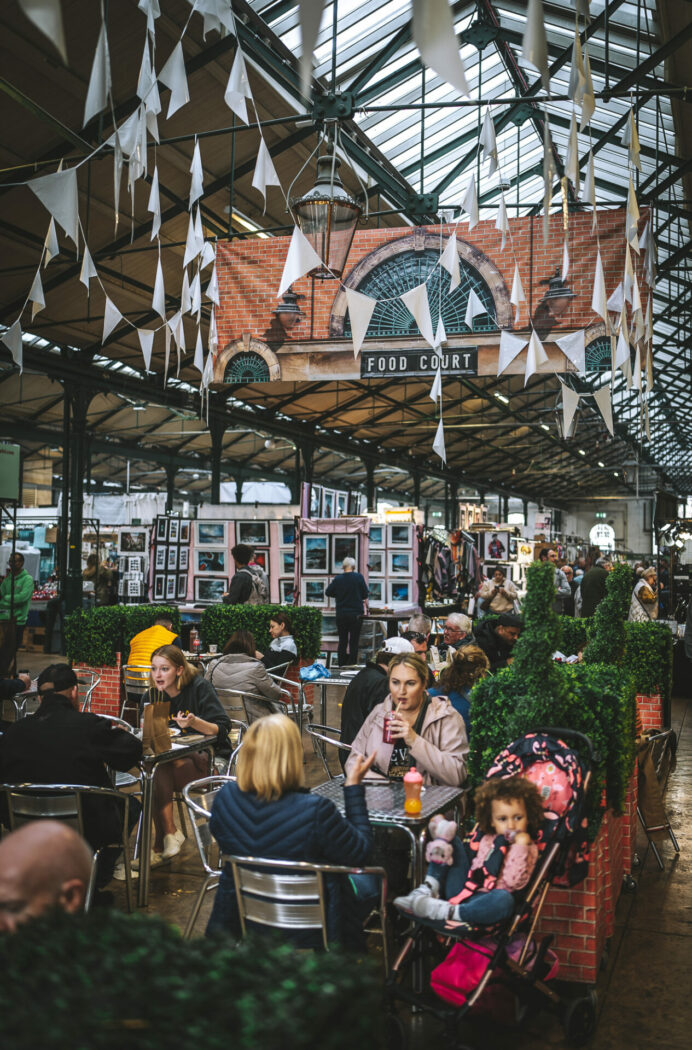

The market is located in the heart of Belfast’s buzzing cultural and food scene – the Cathedral Quarter. This is the oldest part of the city, with a historic trading centre that is now home to modern restaurants, trendy pubs, and beer gardens. Some attractions worth checking out in the Cathedral Quarter include the Metropolitan Arts Centre, St. Anne’s Cathedral, and the NI War Memorial.
Dine at the Peculiar Tea
There is no shortage of restaurants in Belfast, but our favourite experience was a 7-course feast at the Peculiar Tea. This Willy Wonka-themed restaurant located in the heart of Queen’s Quarter offers a unique and very memorable dining experience. Think bright colours, quirky décor, and a fantastic atmosphere!
The founder, Chef Gemma Austin, is on a mission to transport her guests back to a time of nostalgia and playfulness, so the food here is anything but boring! You can book a spot at the Peculiar Tea for their afternoon tea, featuring a variety of beautiful pastries, flavorful finger sandwiches, and sweet desserts. Or splurge on a 7-course dinner tasting menu – the ultimate gastronomic experience that starts at £70 per person. This fun culinary experience include creative dishes featuring goat cheese, monkfish, jerusalem artichoke, duck, and chocolate and more. Each course is a work of art in terms of presentation and flavour complexity and is definitely worth the splurge!
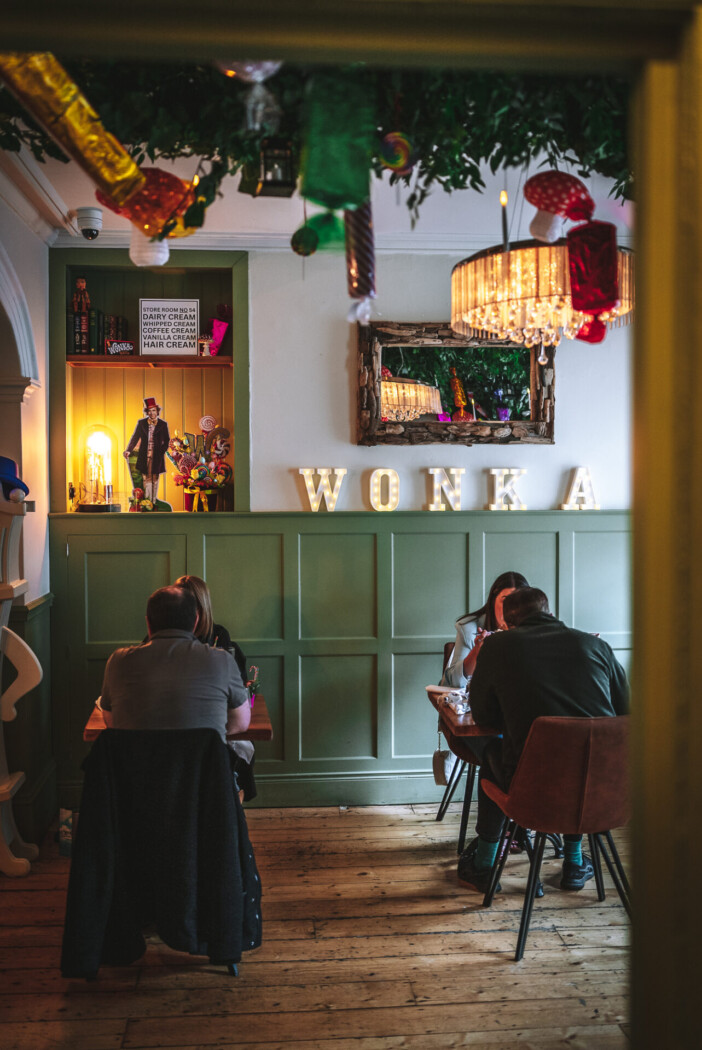


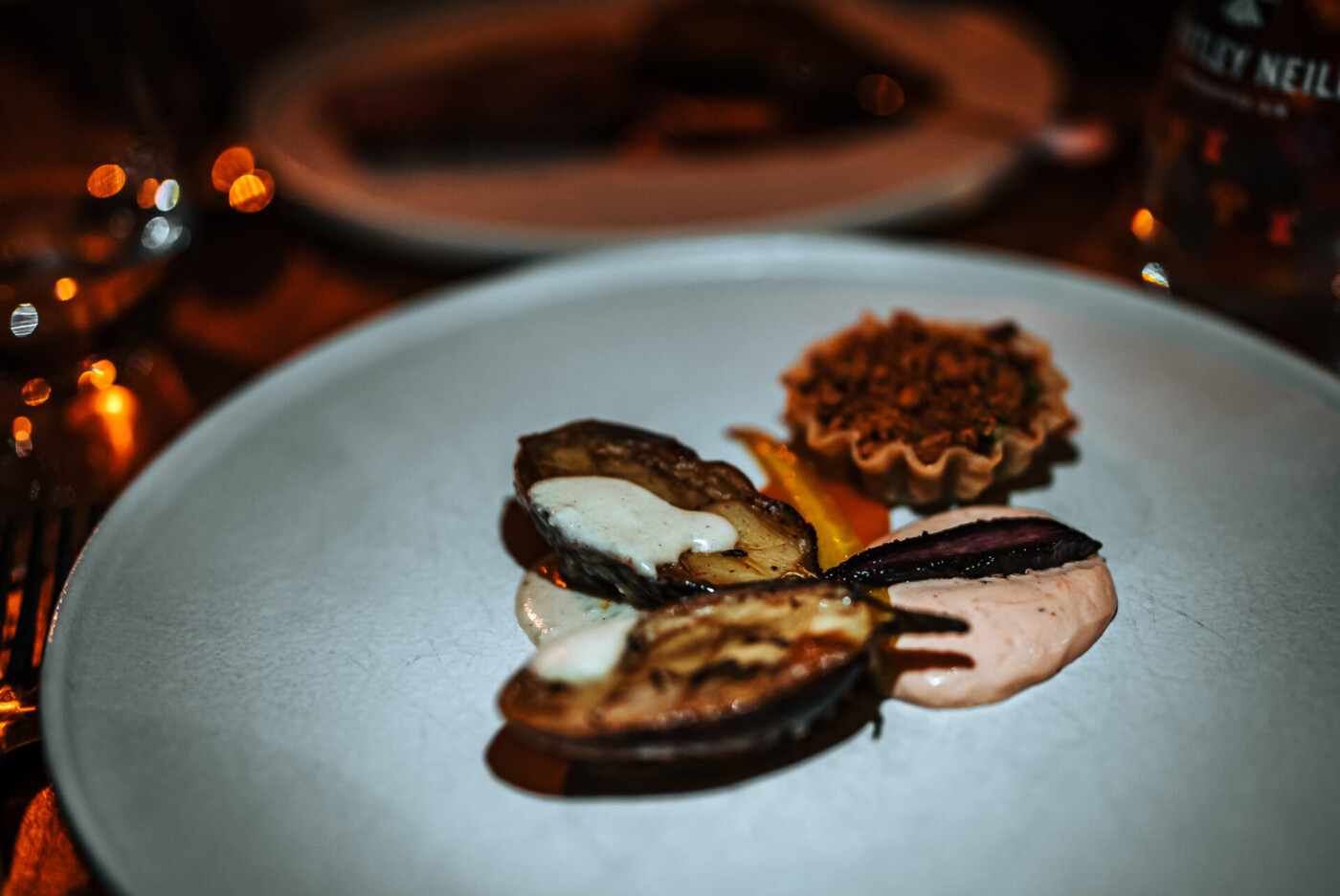
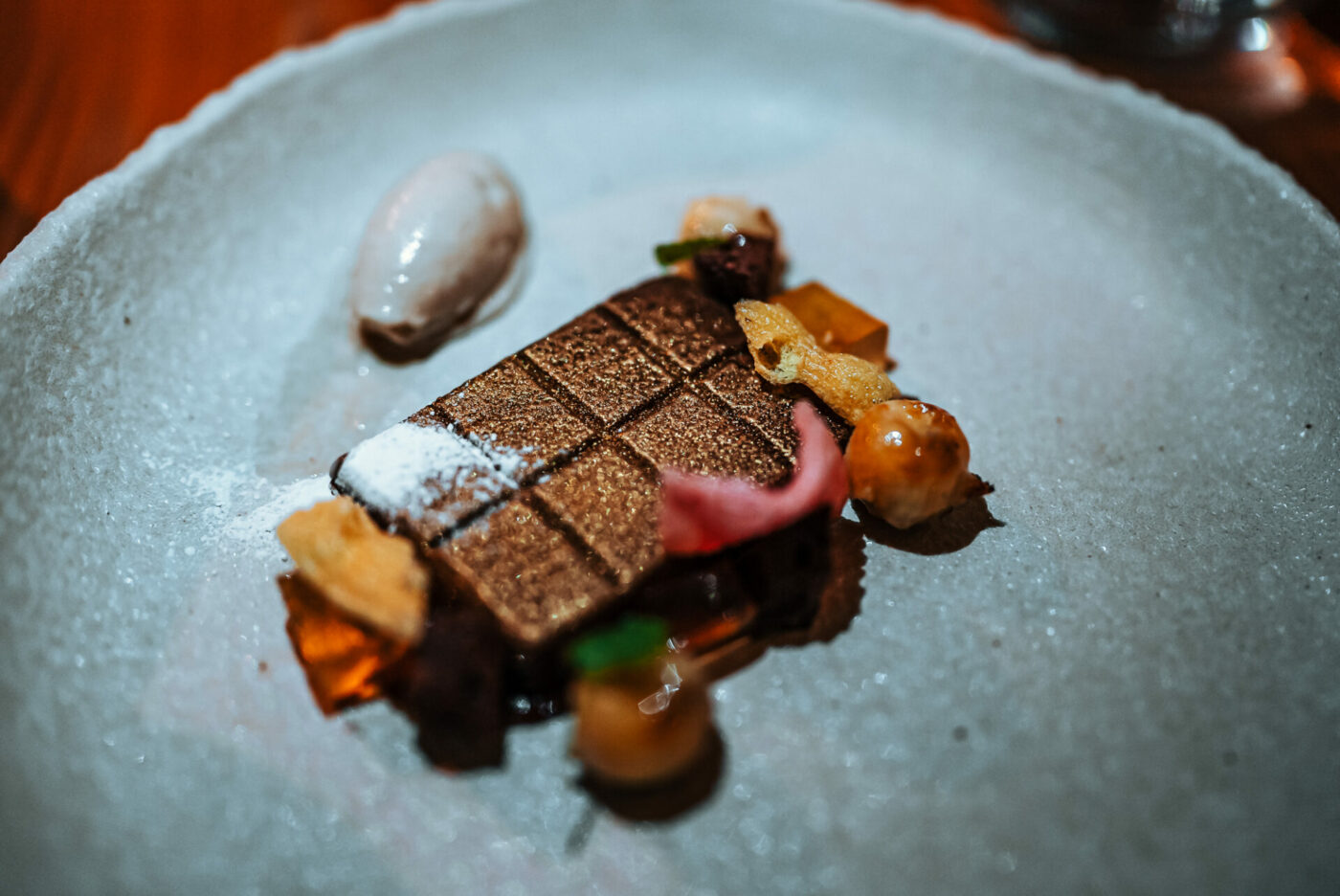
So there you have it. We’ve reached the end of our recommended Causeway Coastal Route! Whether you choose to follow the route from Belfast to Derry-Londonderry or in reserve, get ready for picturesque drives, charming towns, and some world-famous destinations like the Giant’s Causeway, the epic ruins of Dunluce Castle or the famous Dark Hedges. We hope you’ve found this guide helpful in planning your own Northern Ireland adventure.
Disclaimer: We visited Northern Ireland as guests of Tourism Ireland, but, as always, all opinions expressed in this article are our own.

